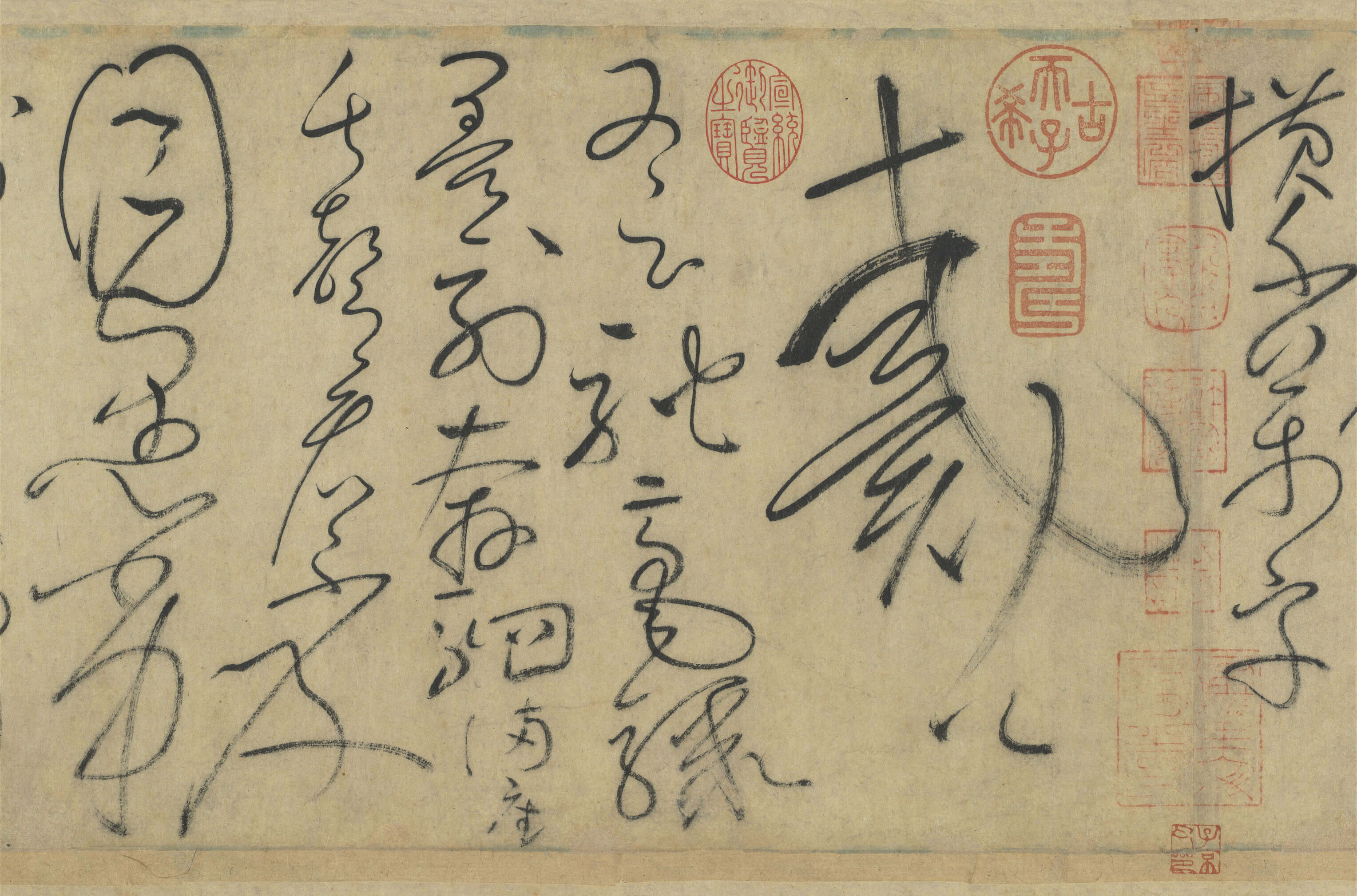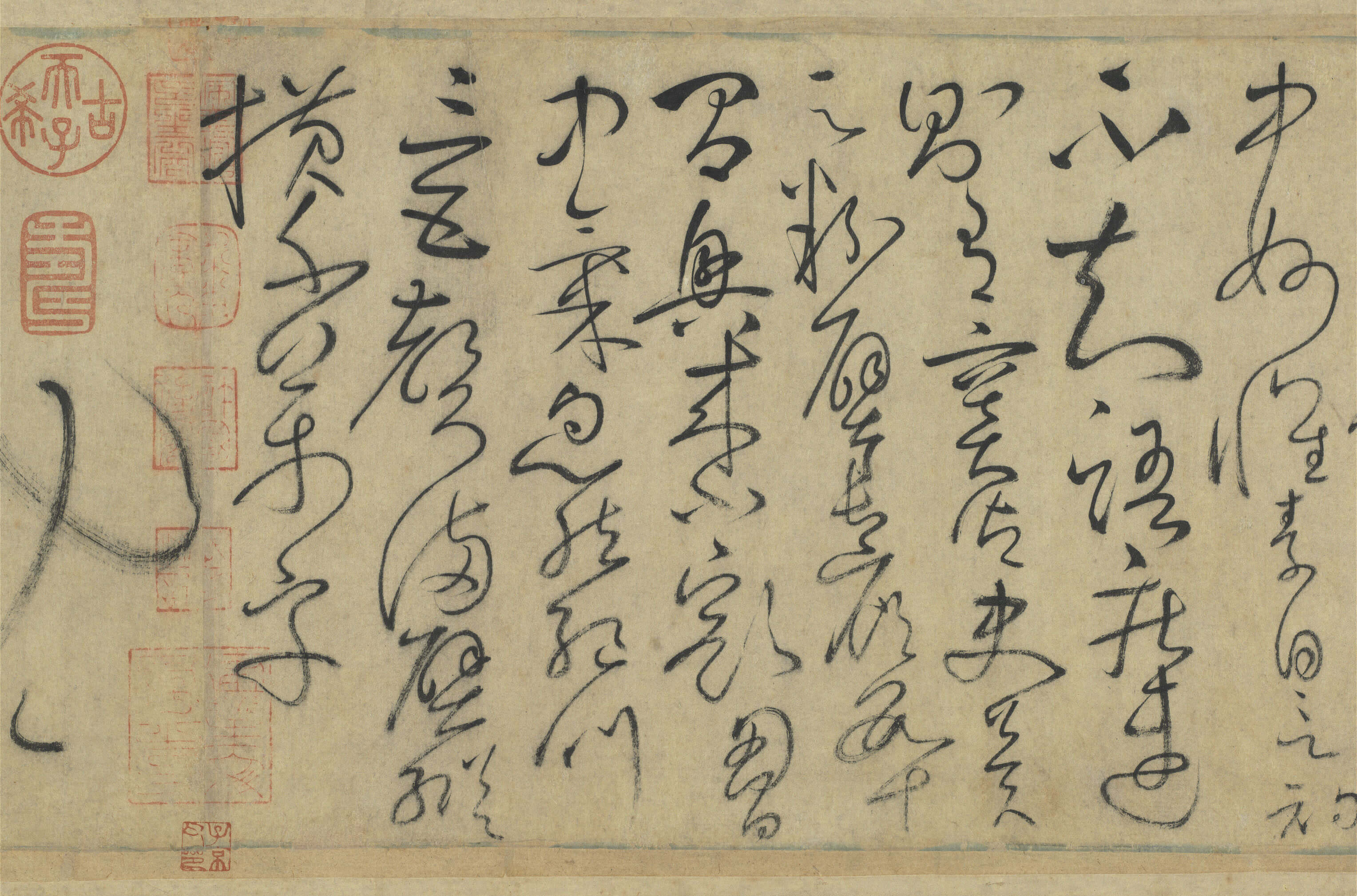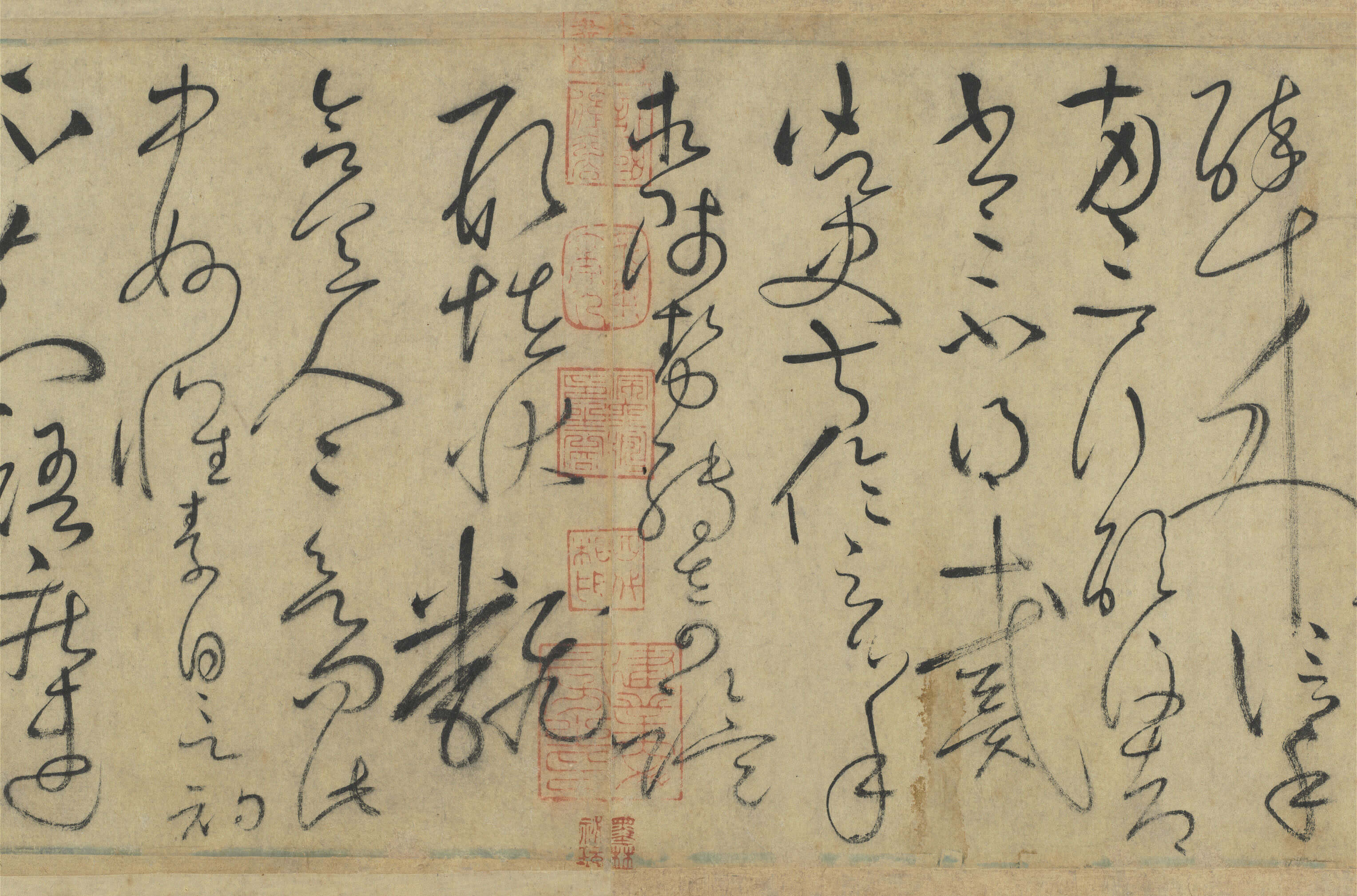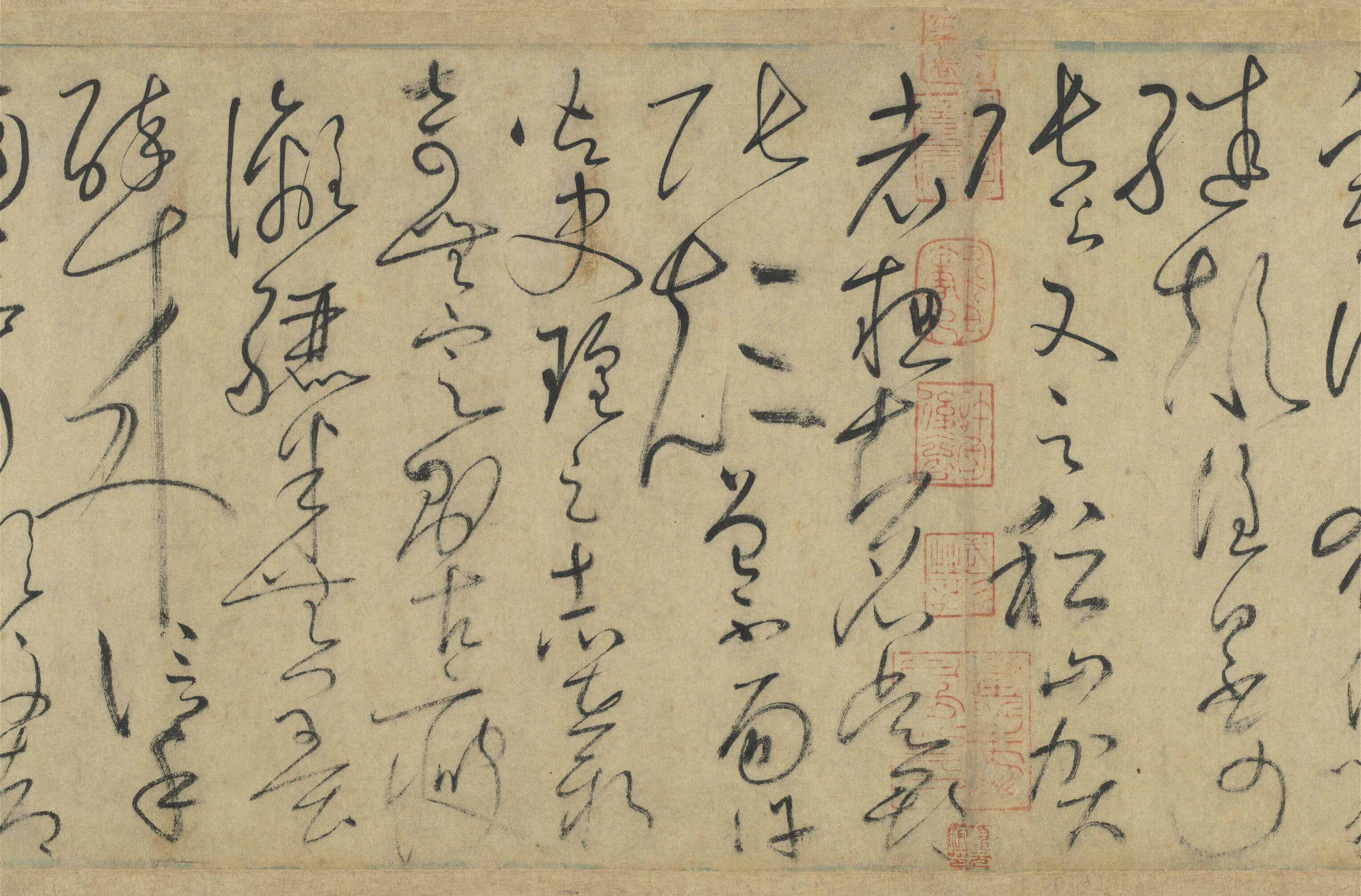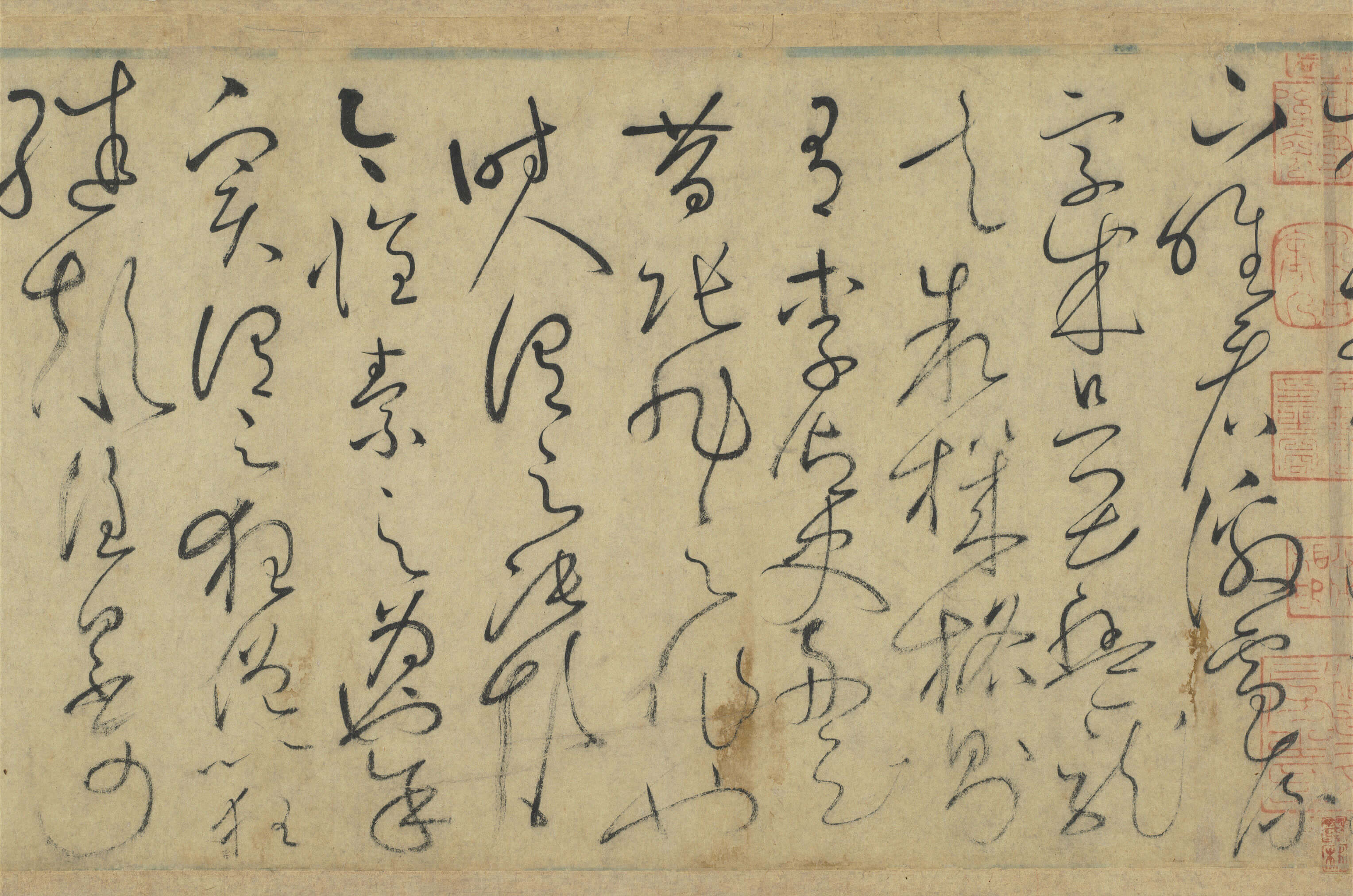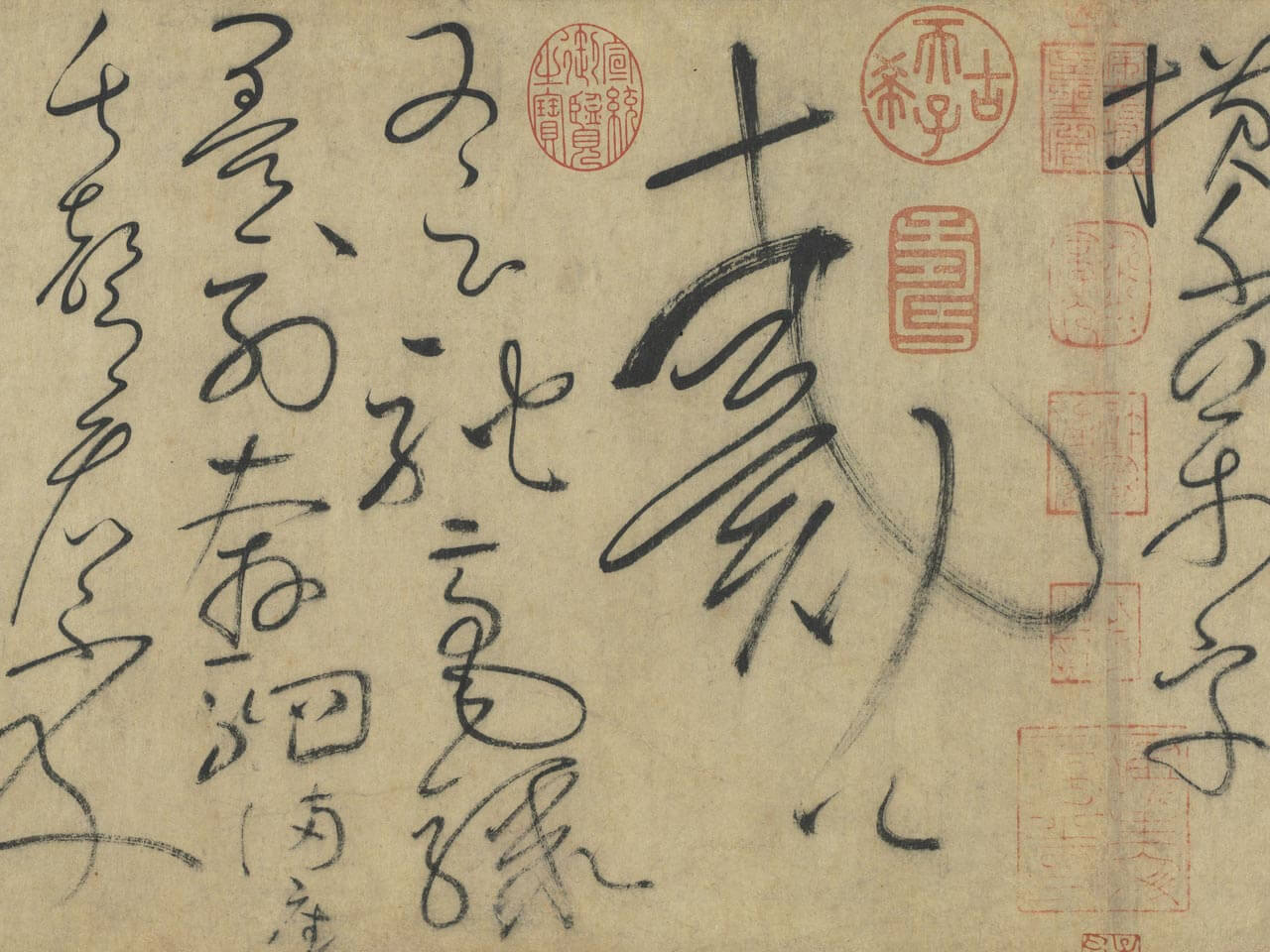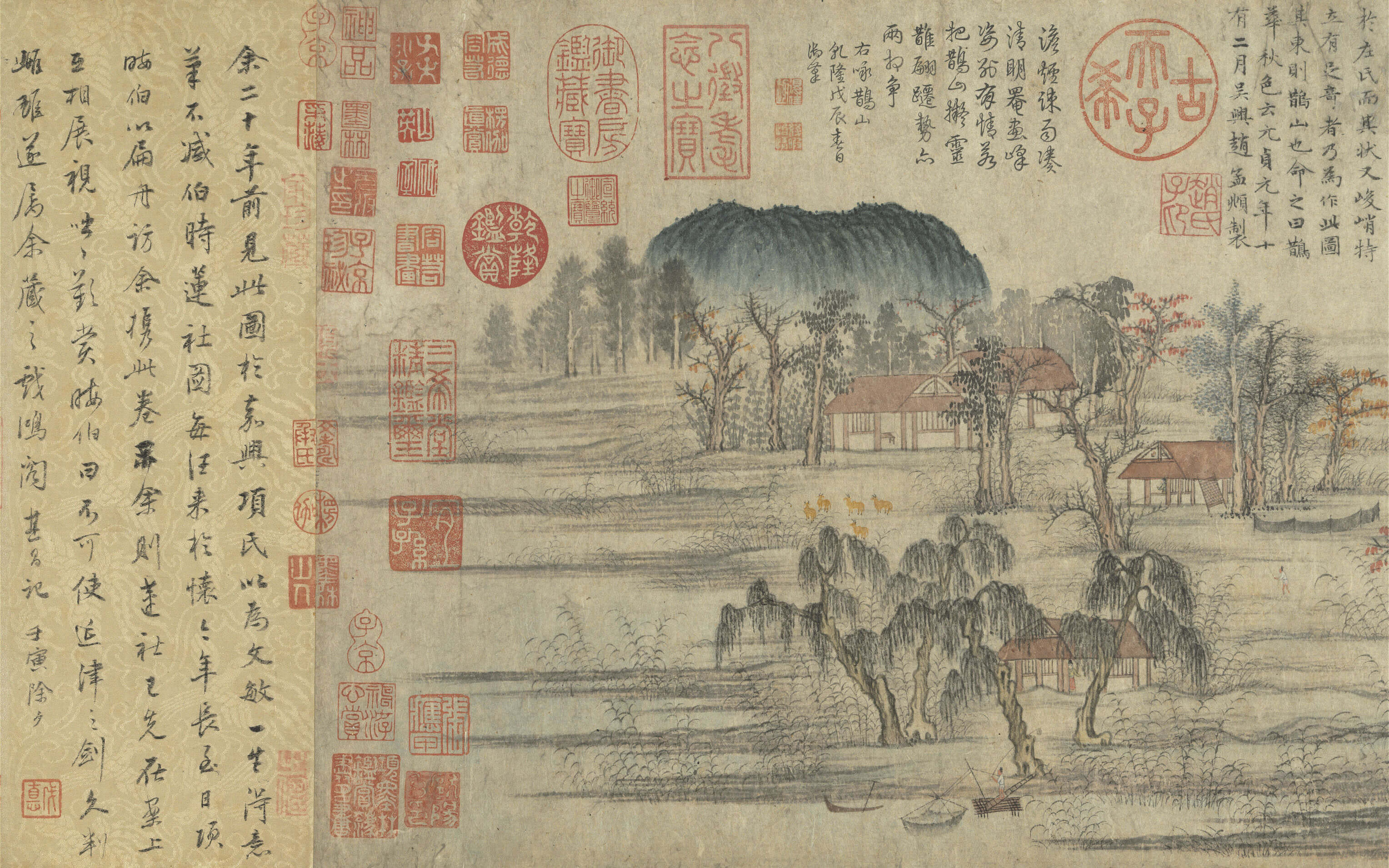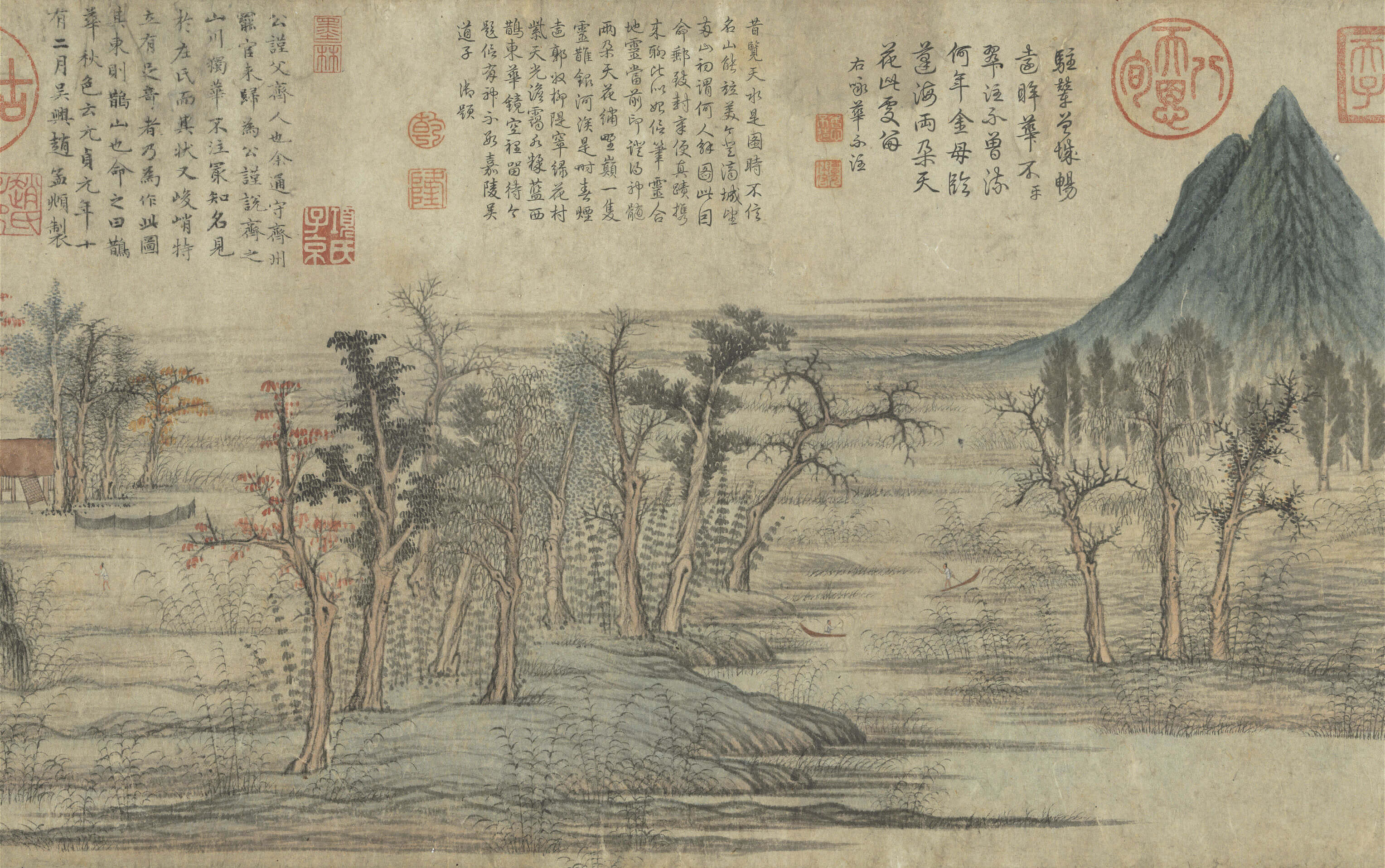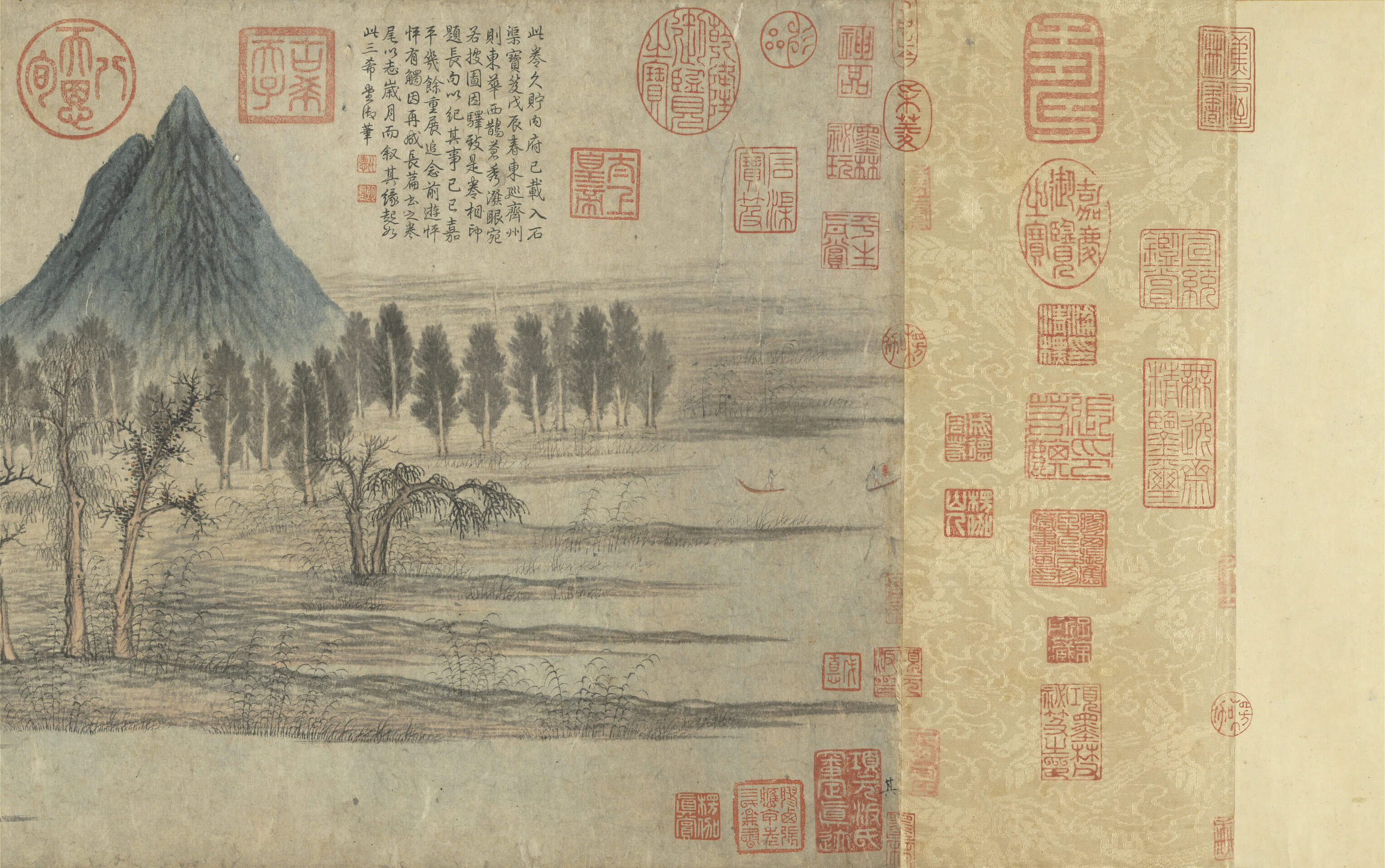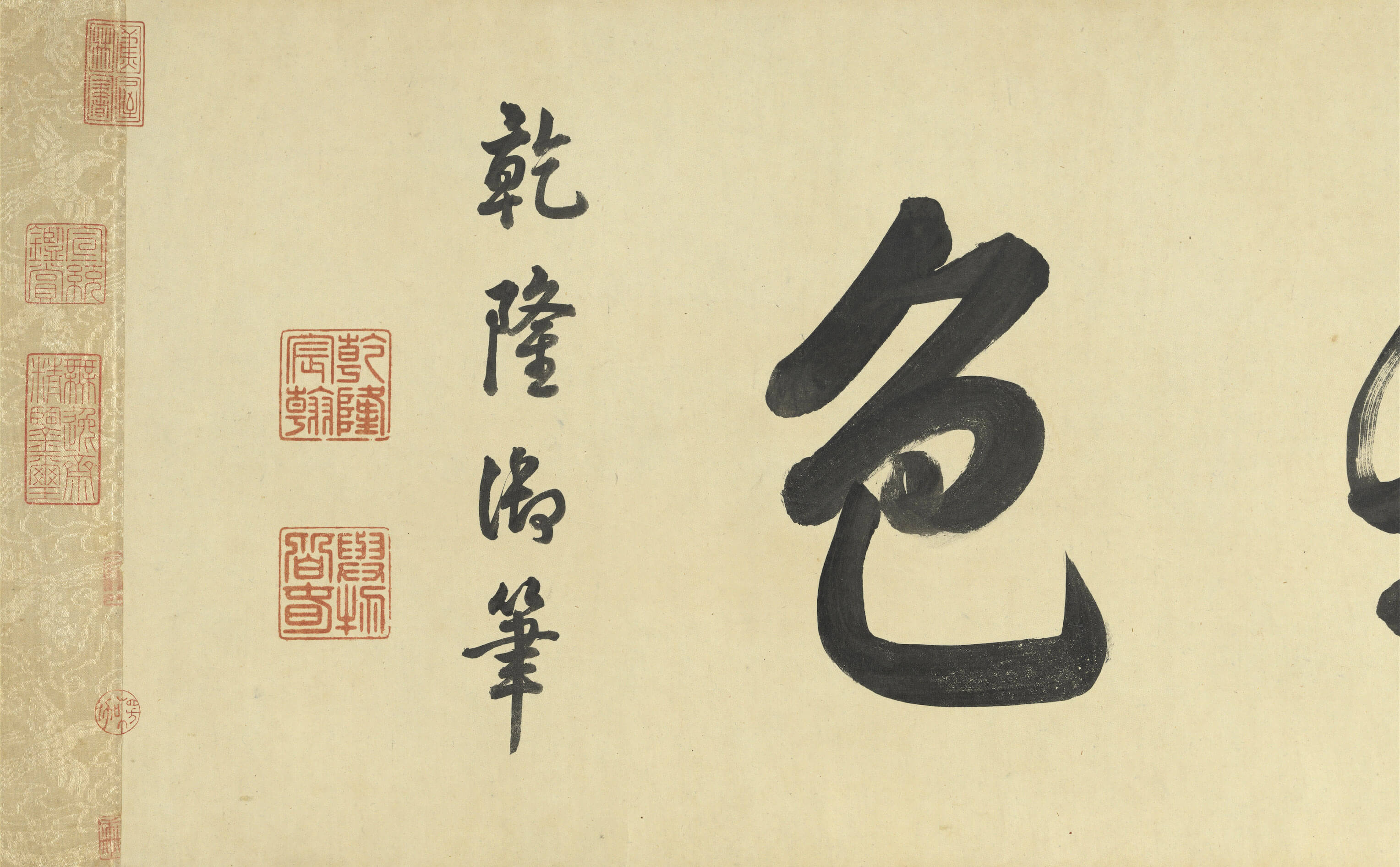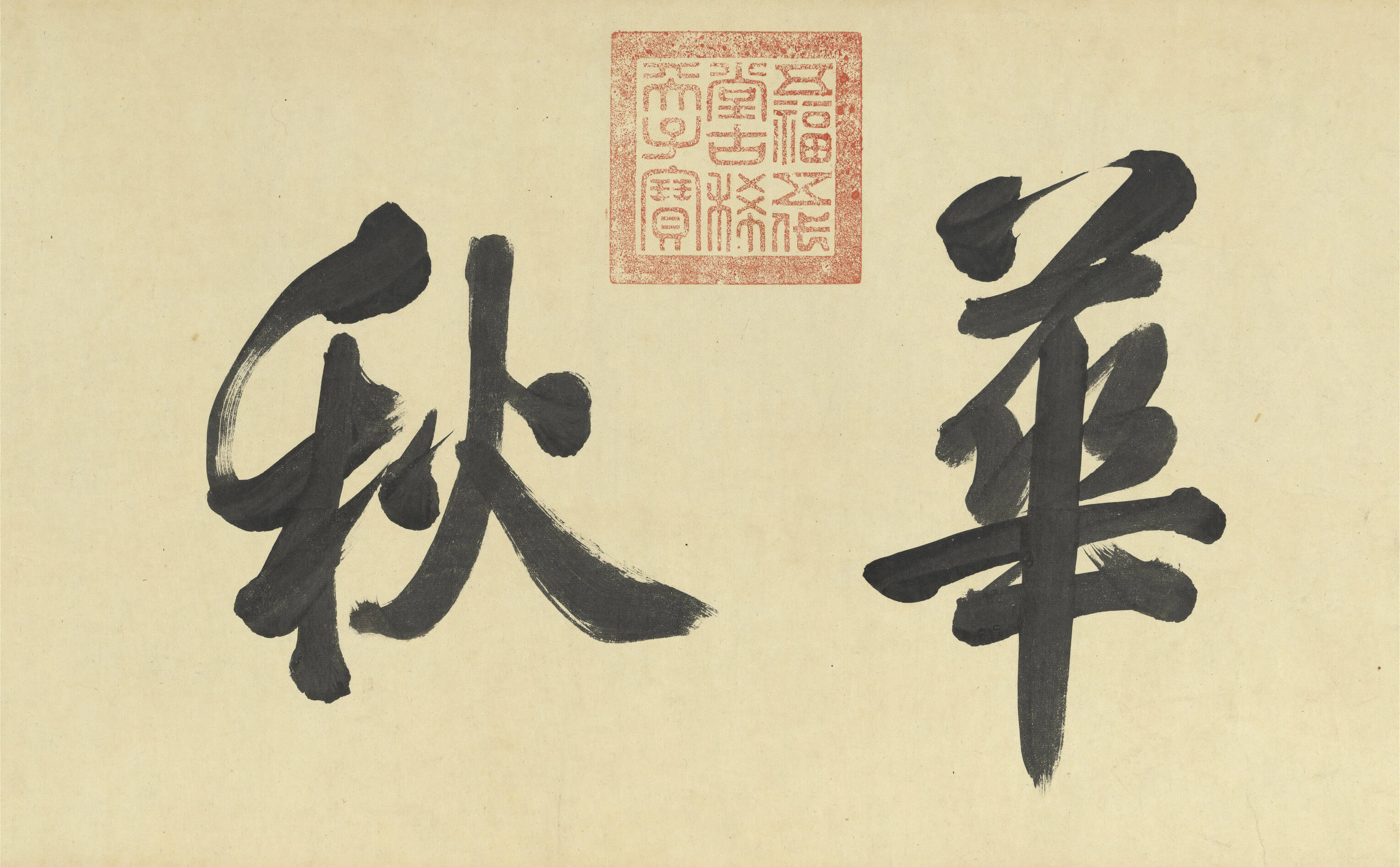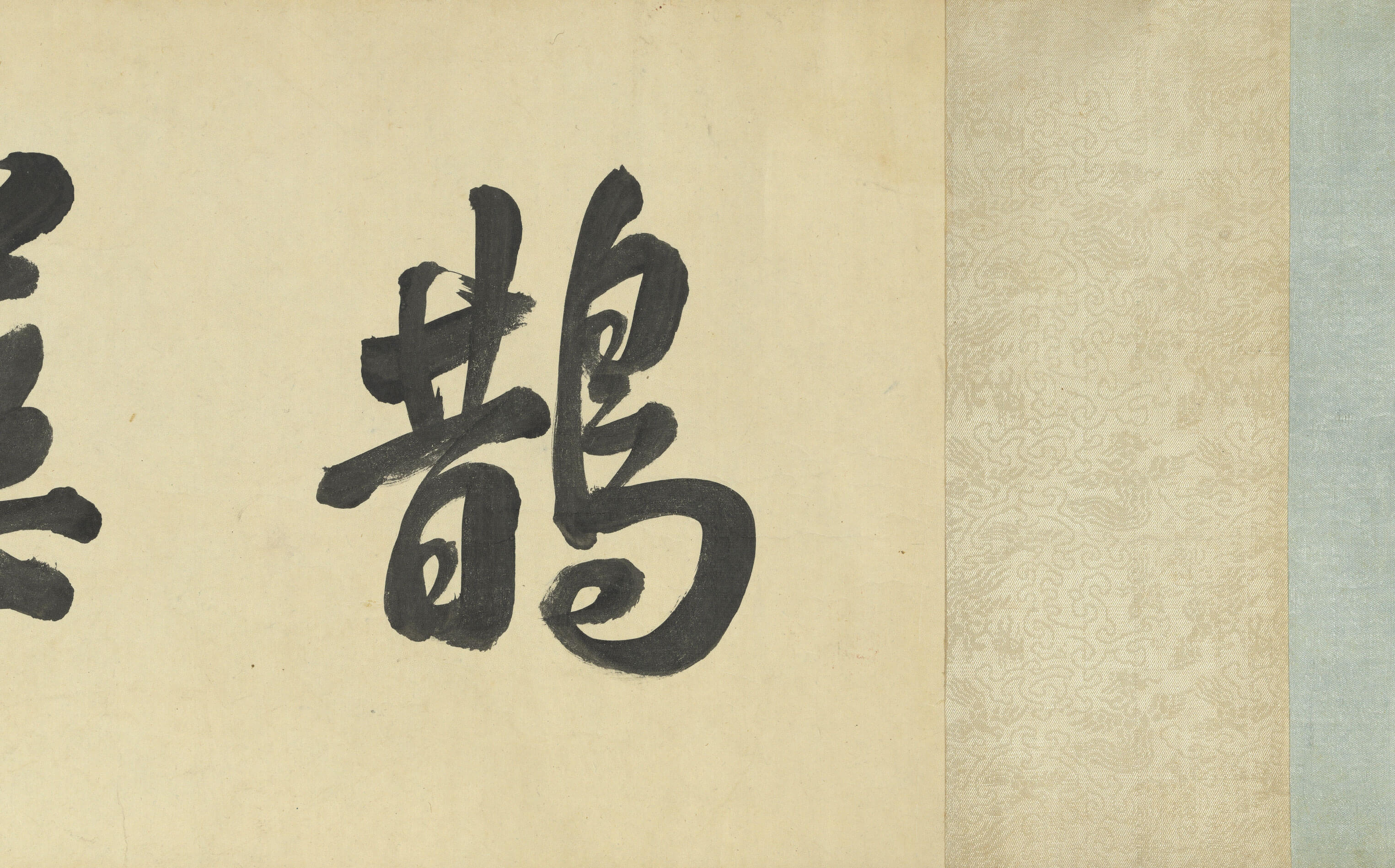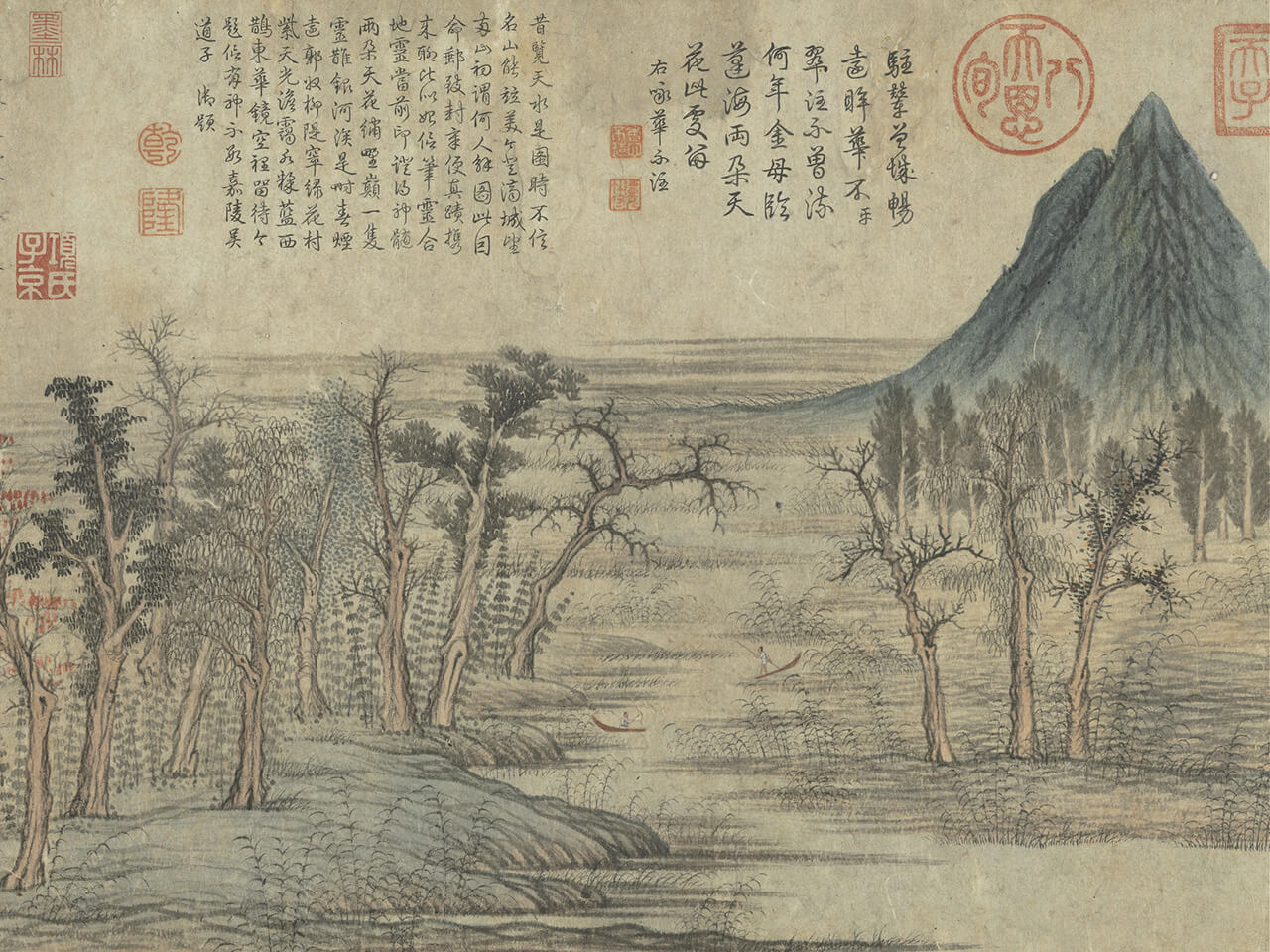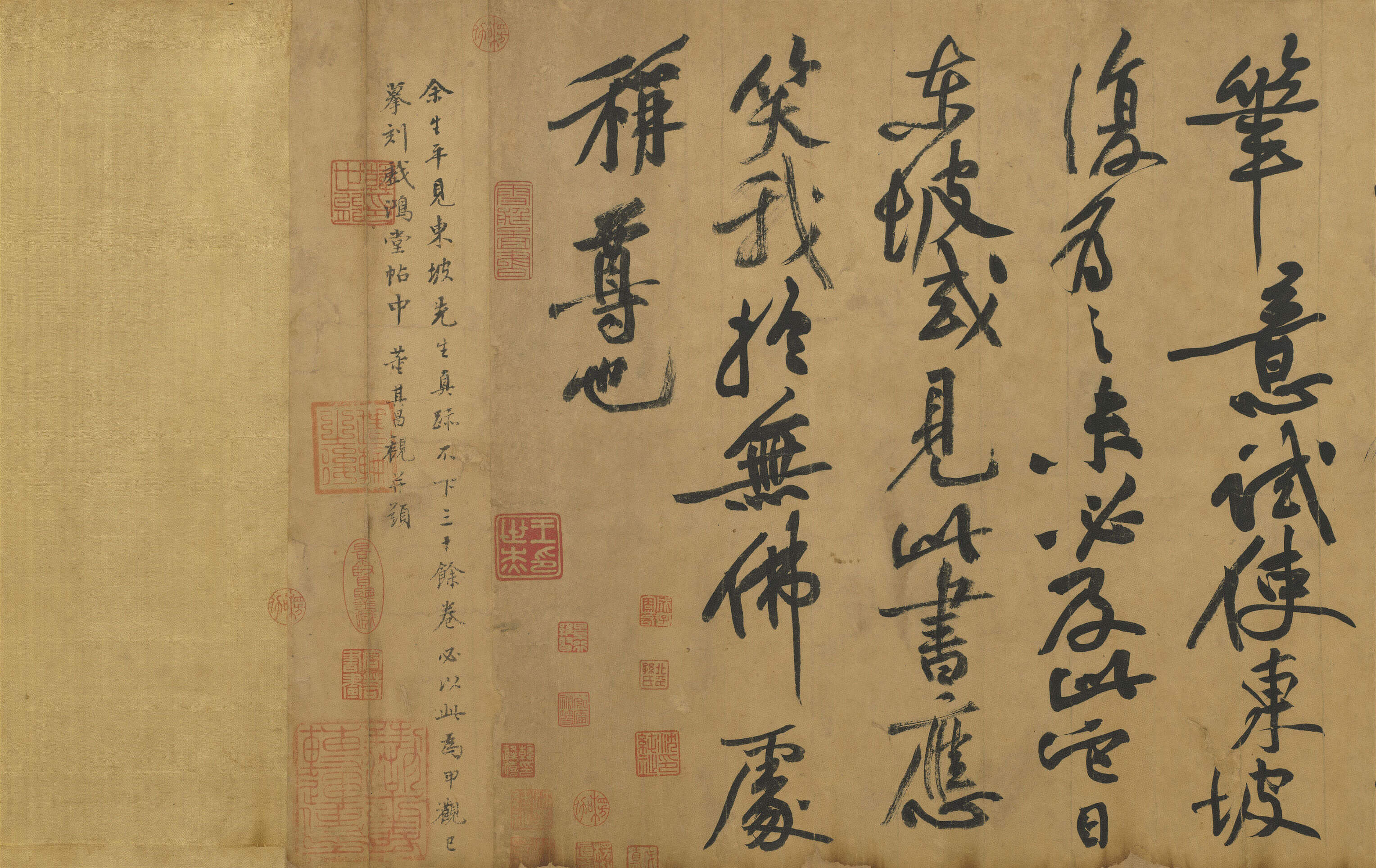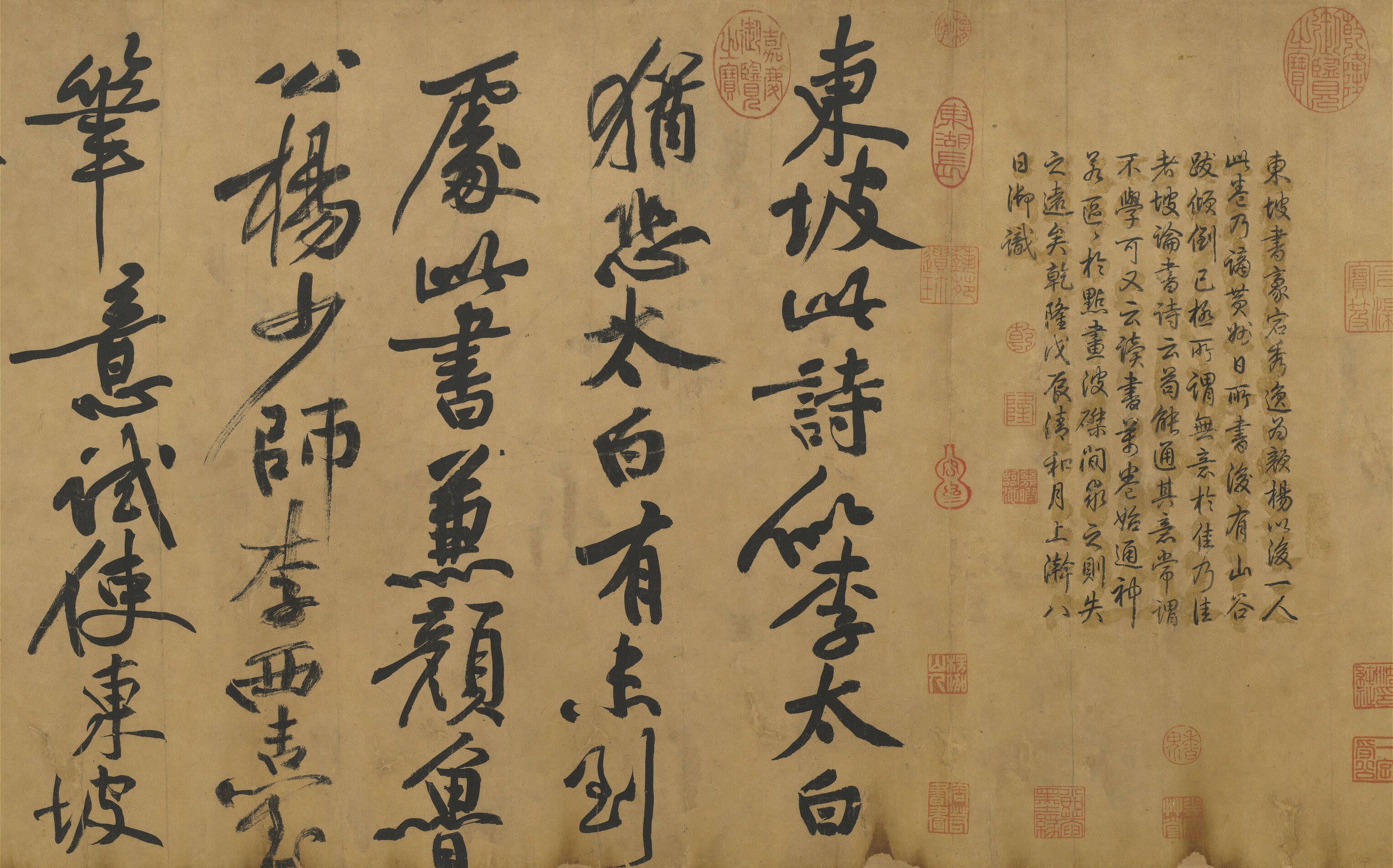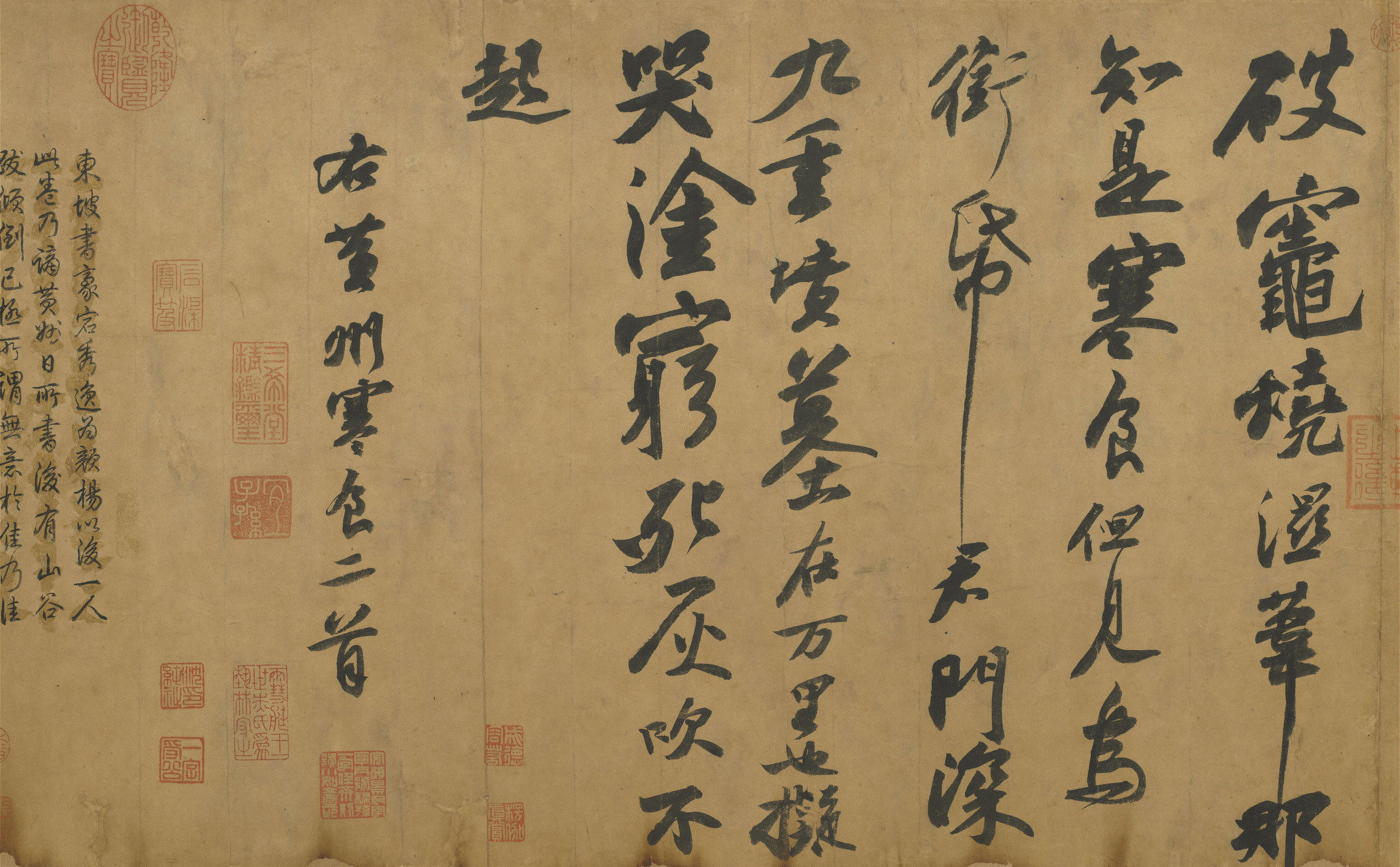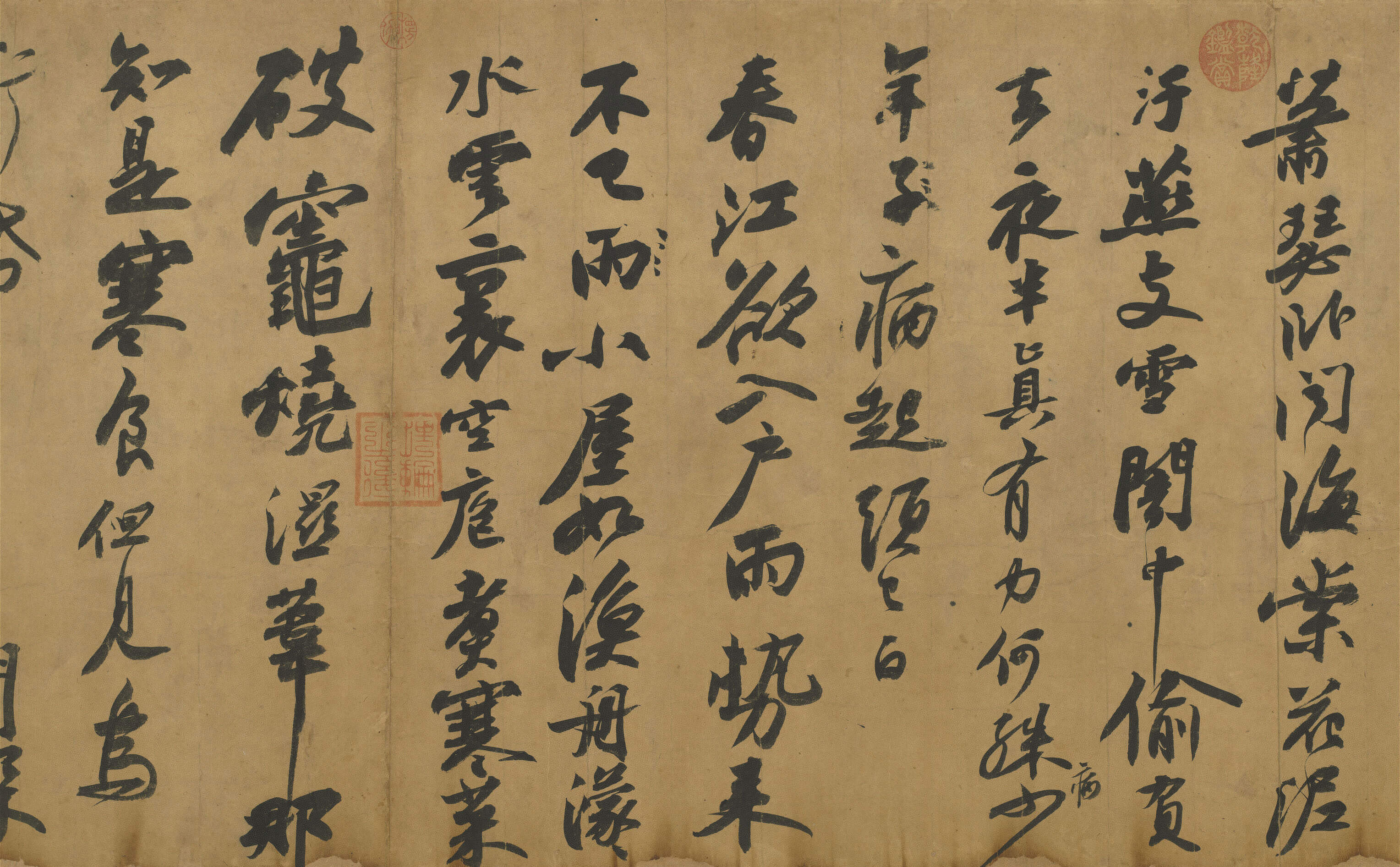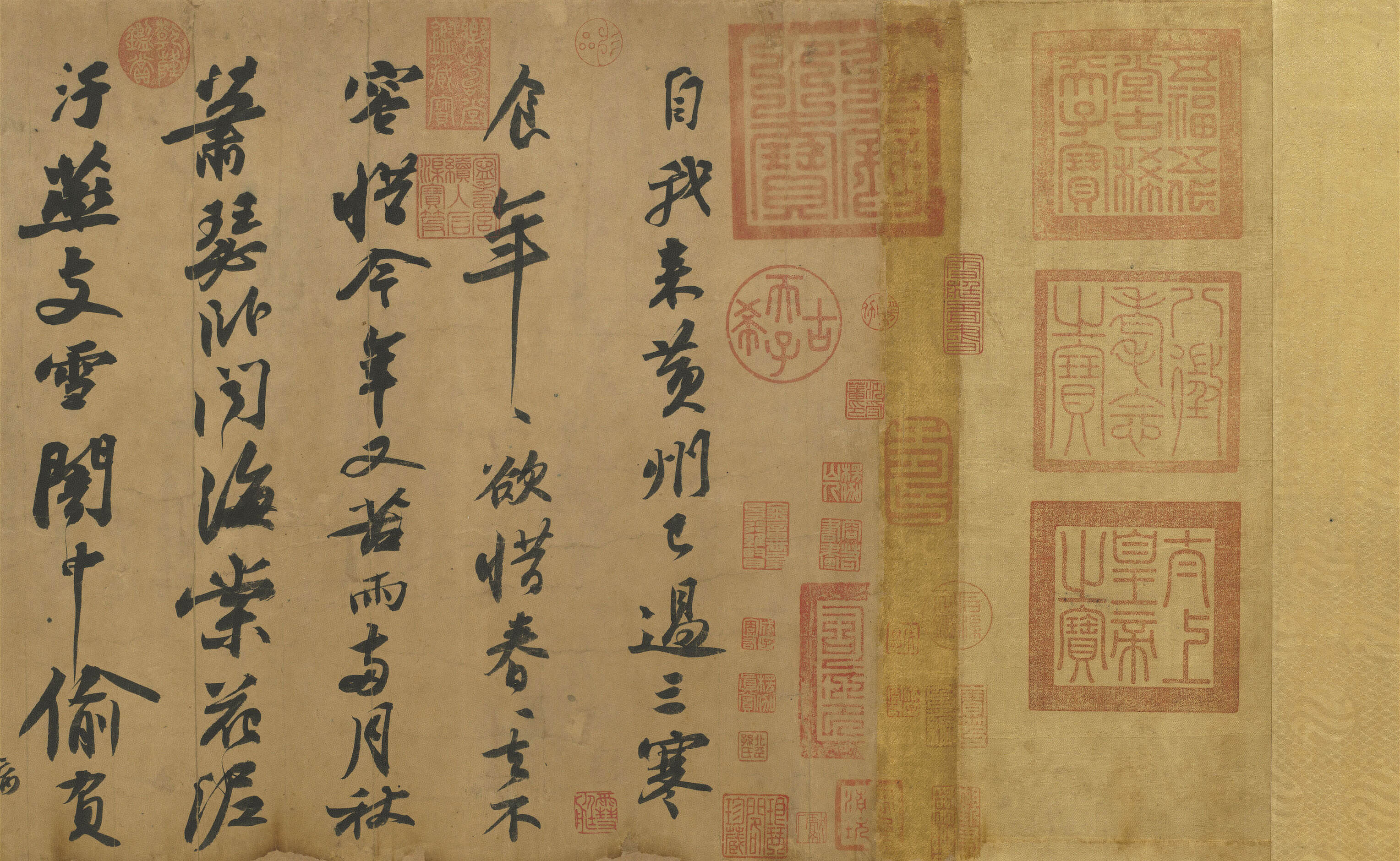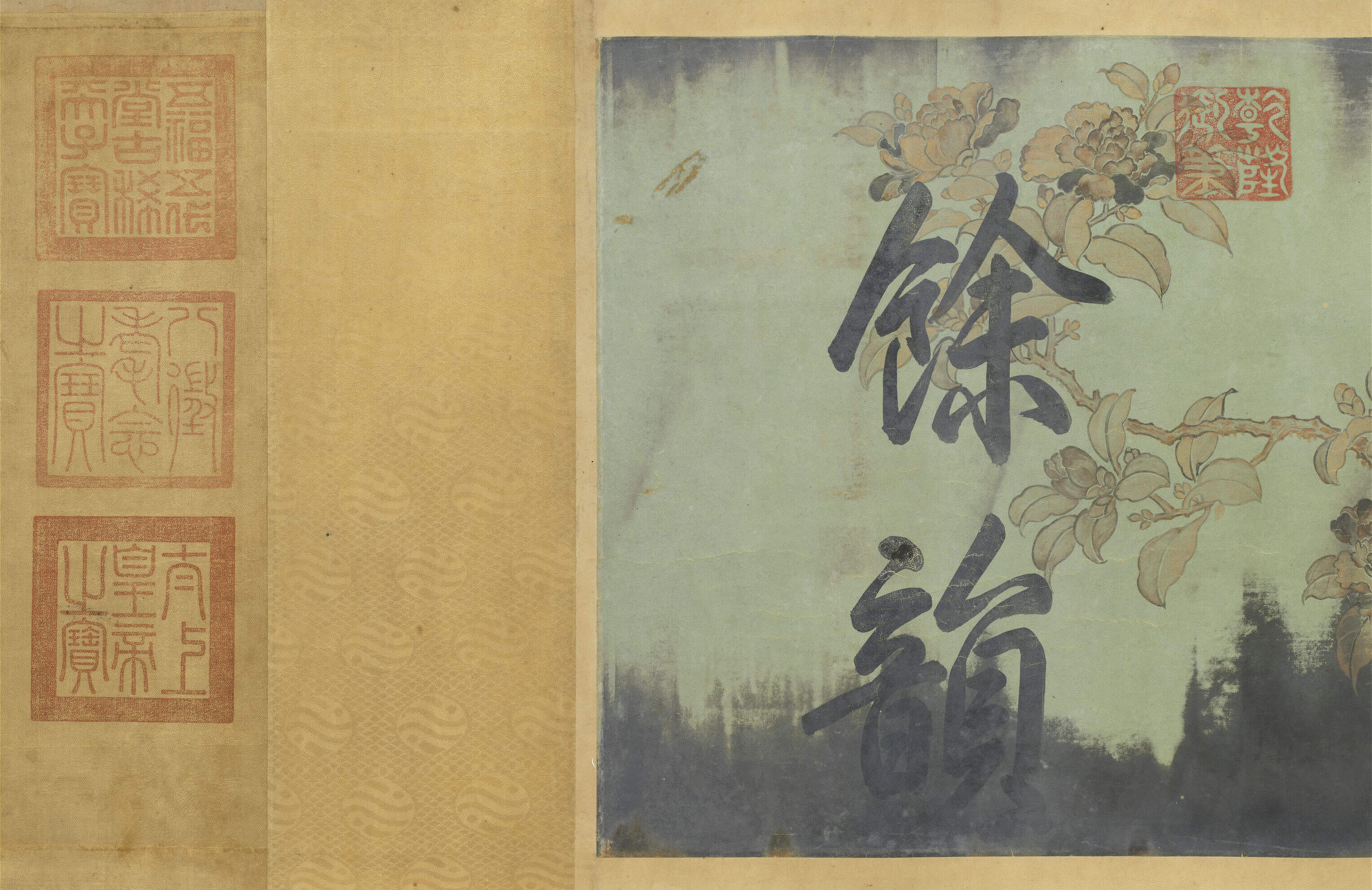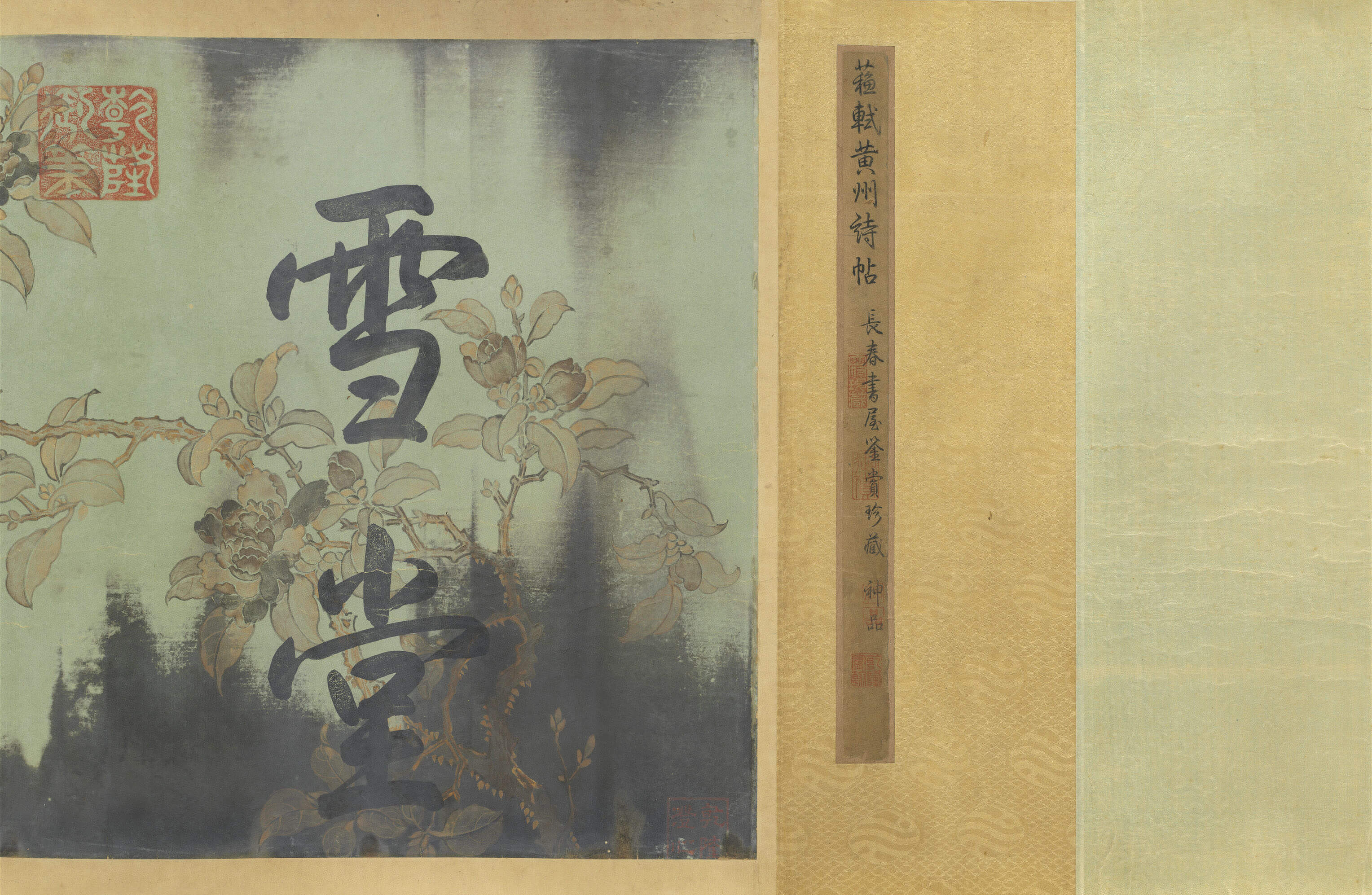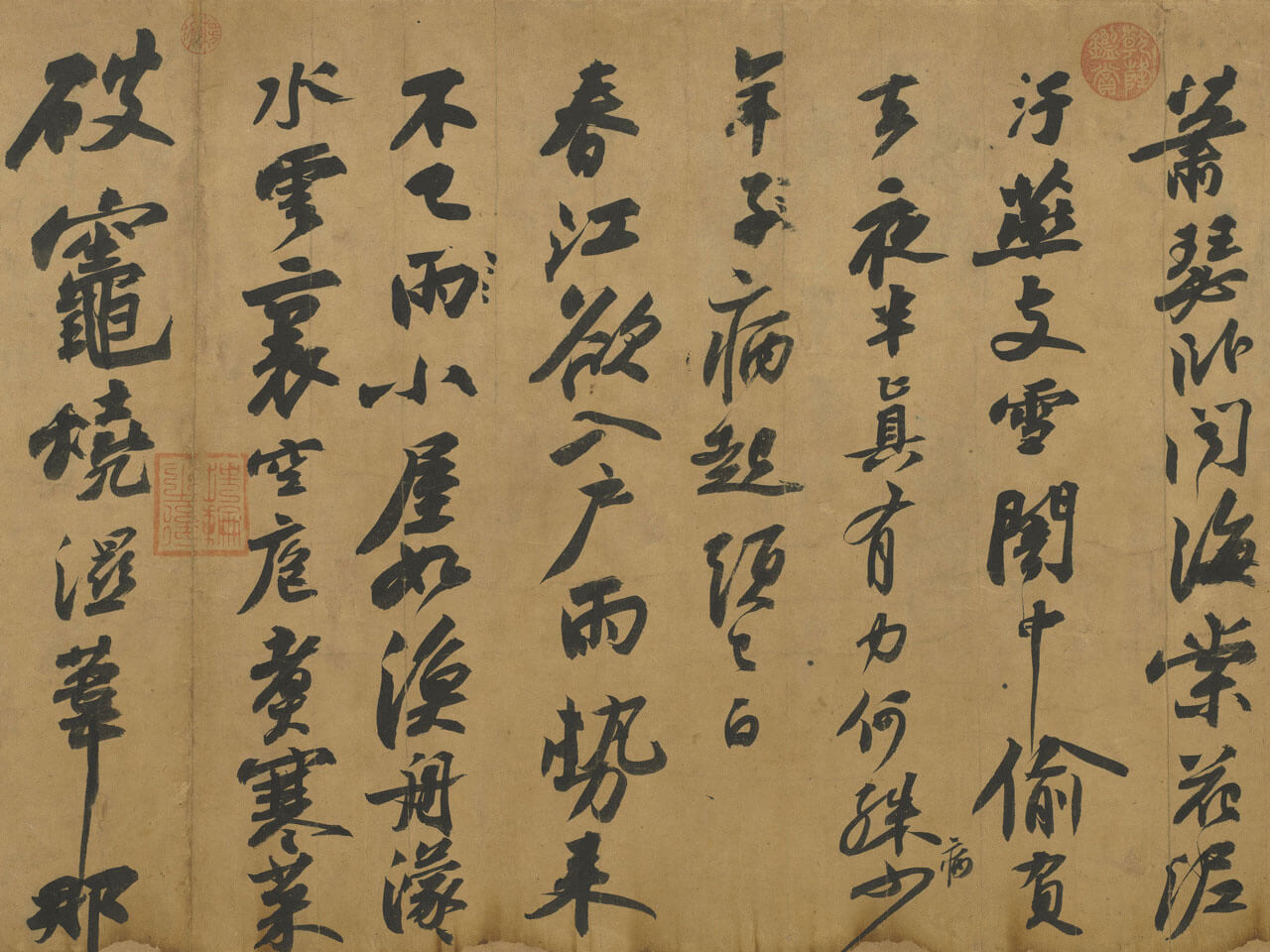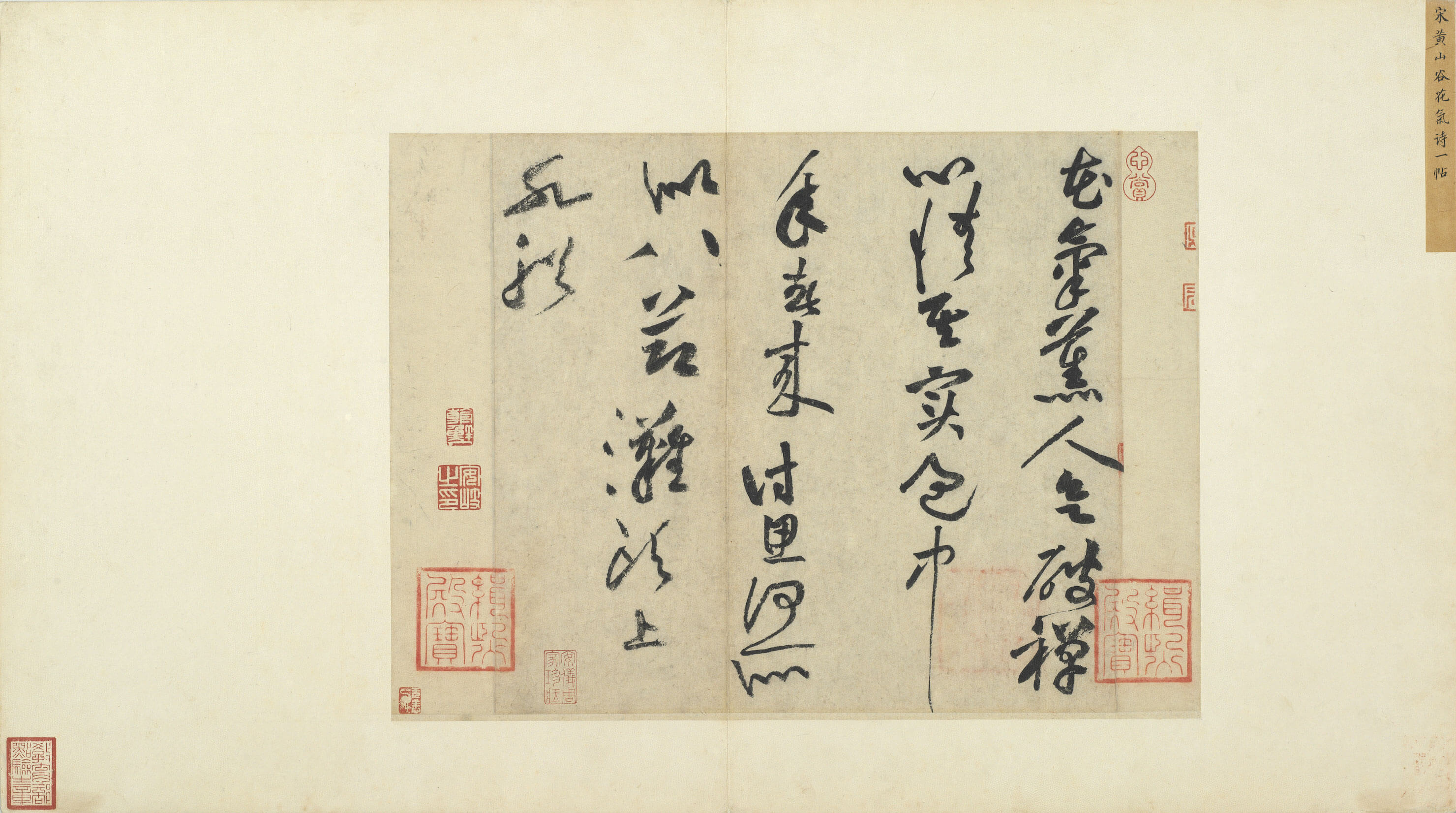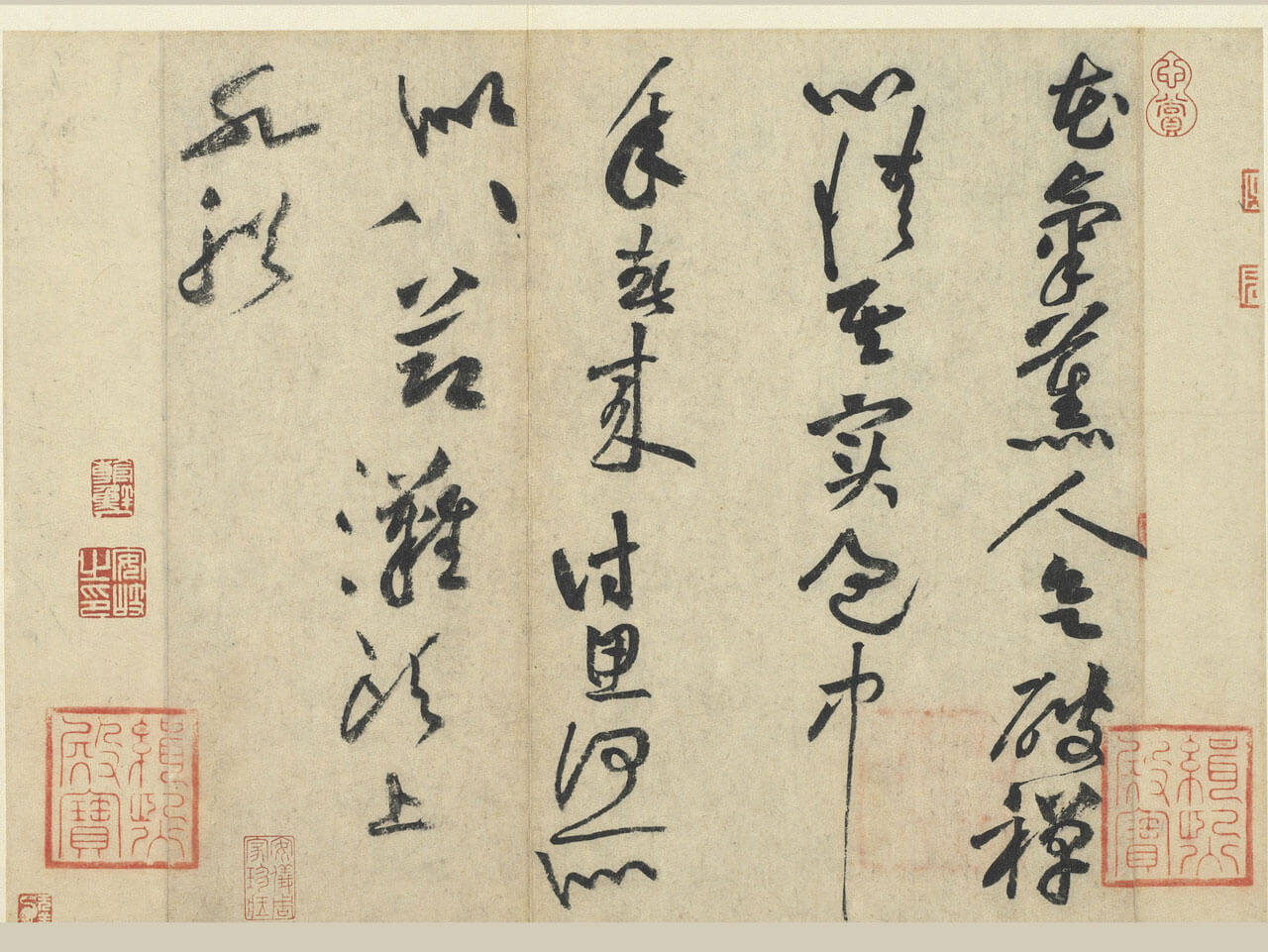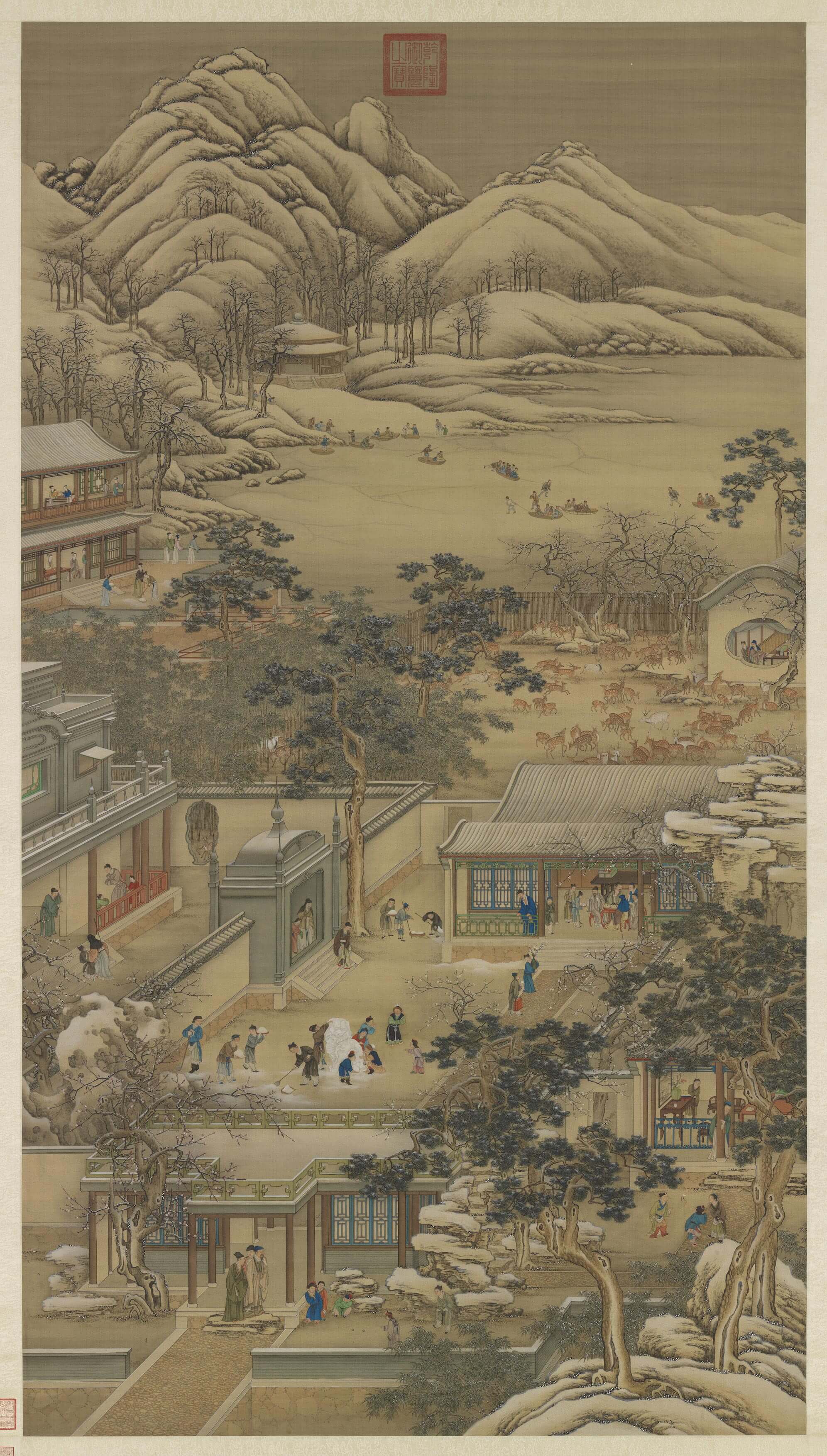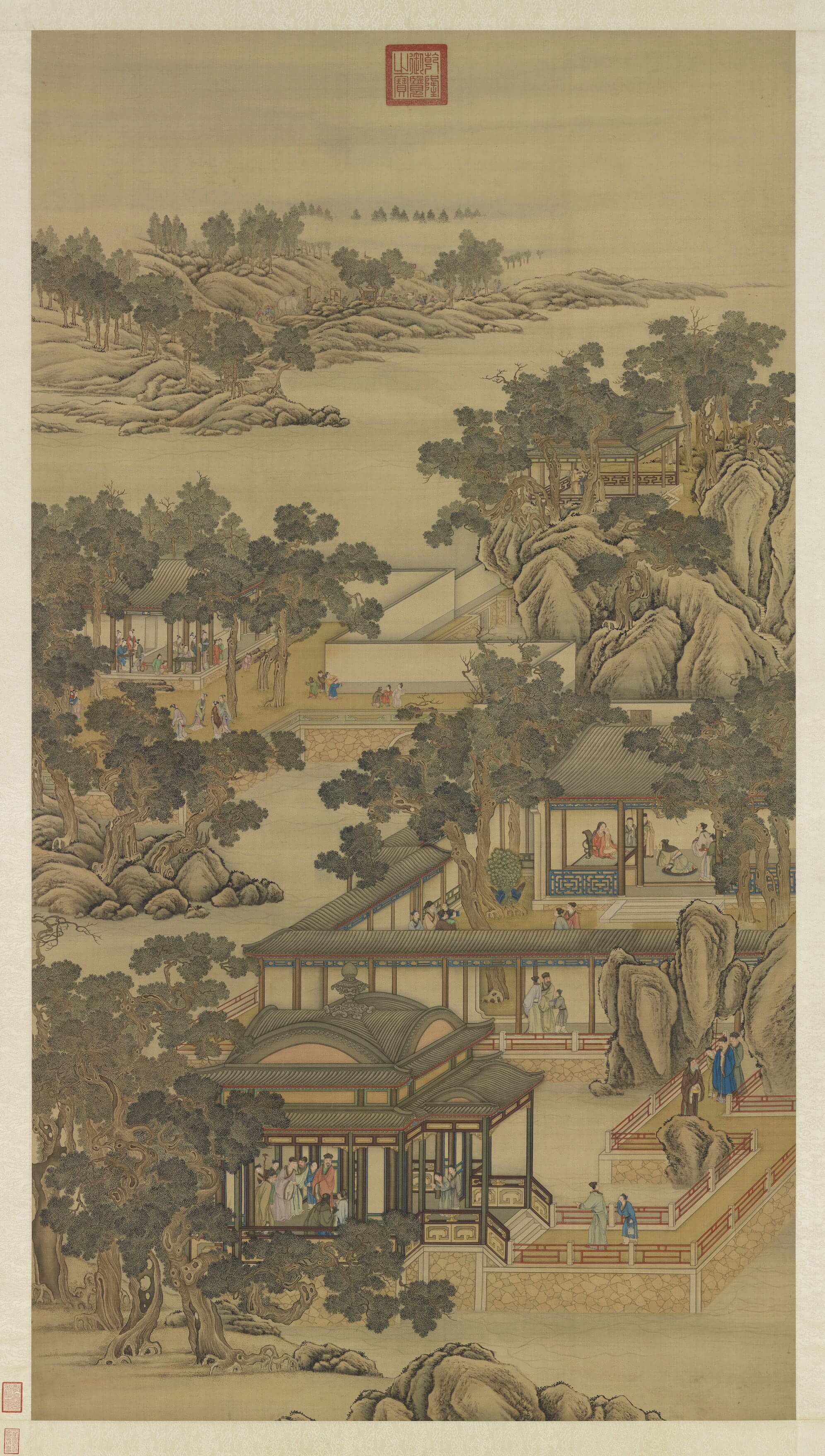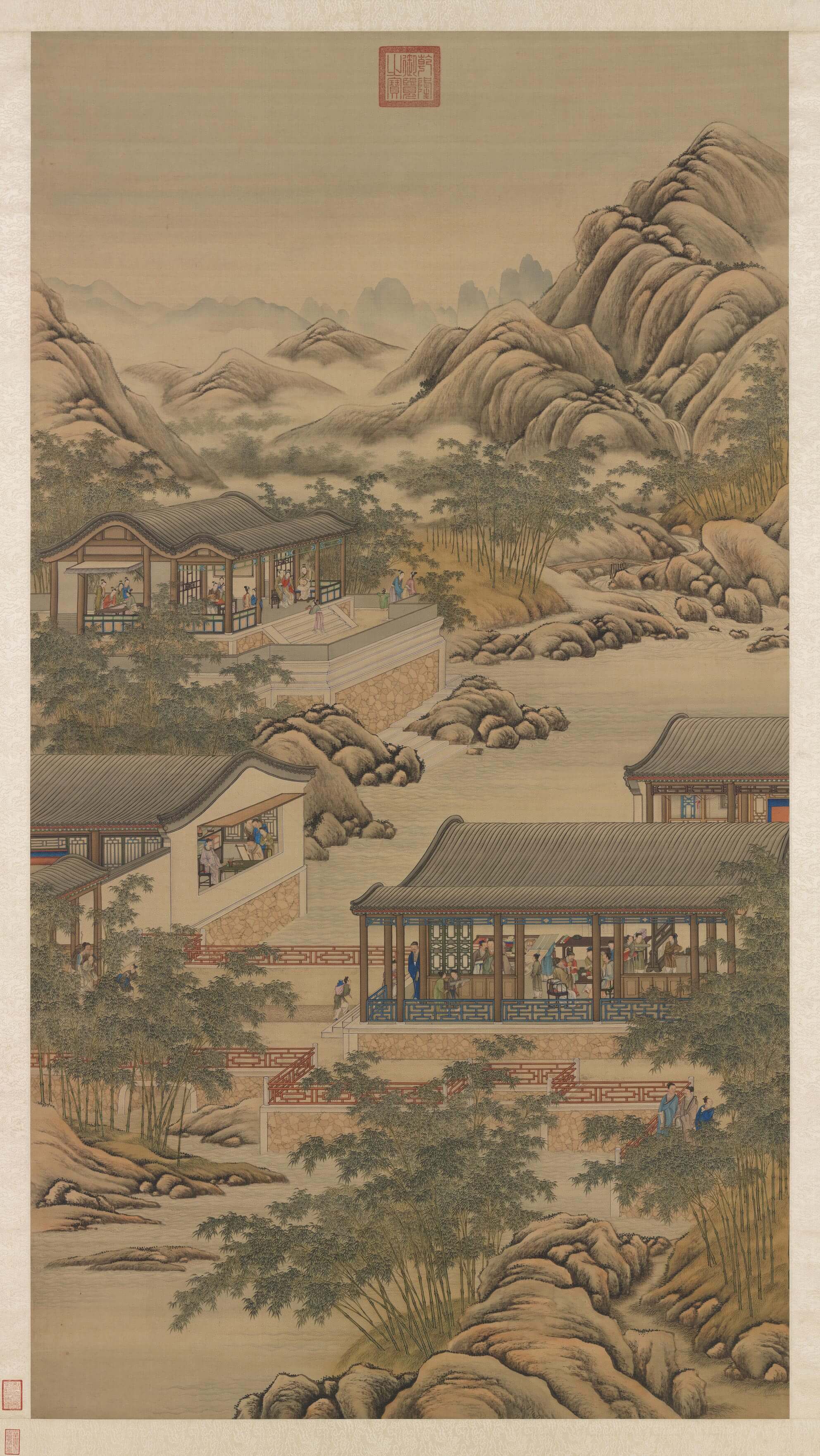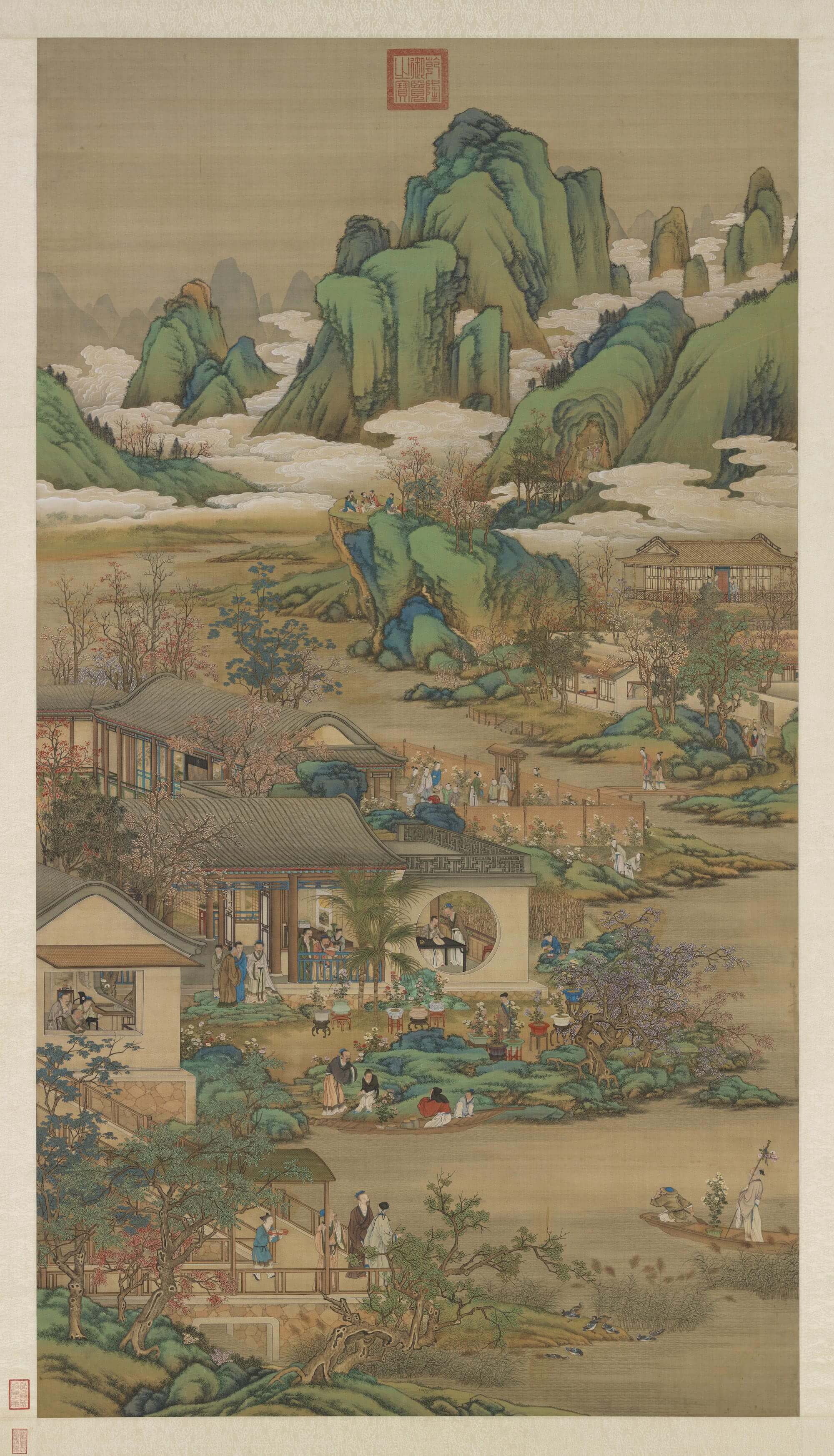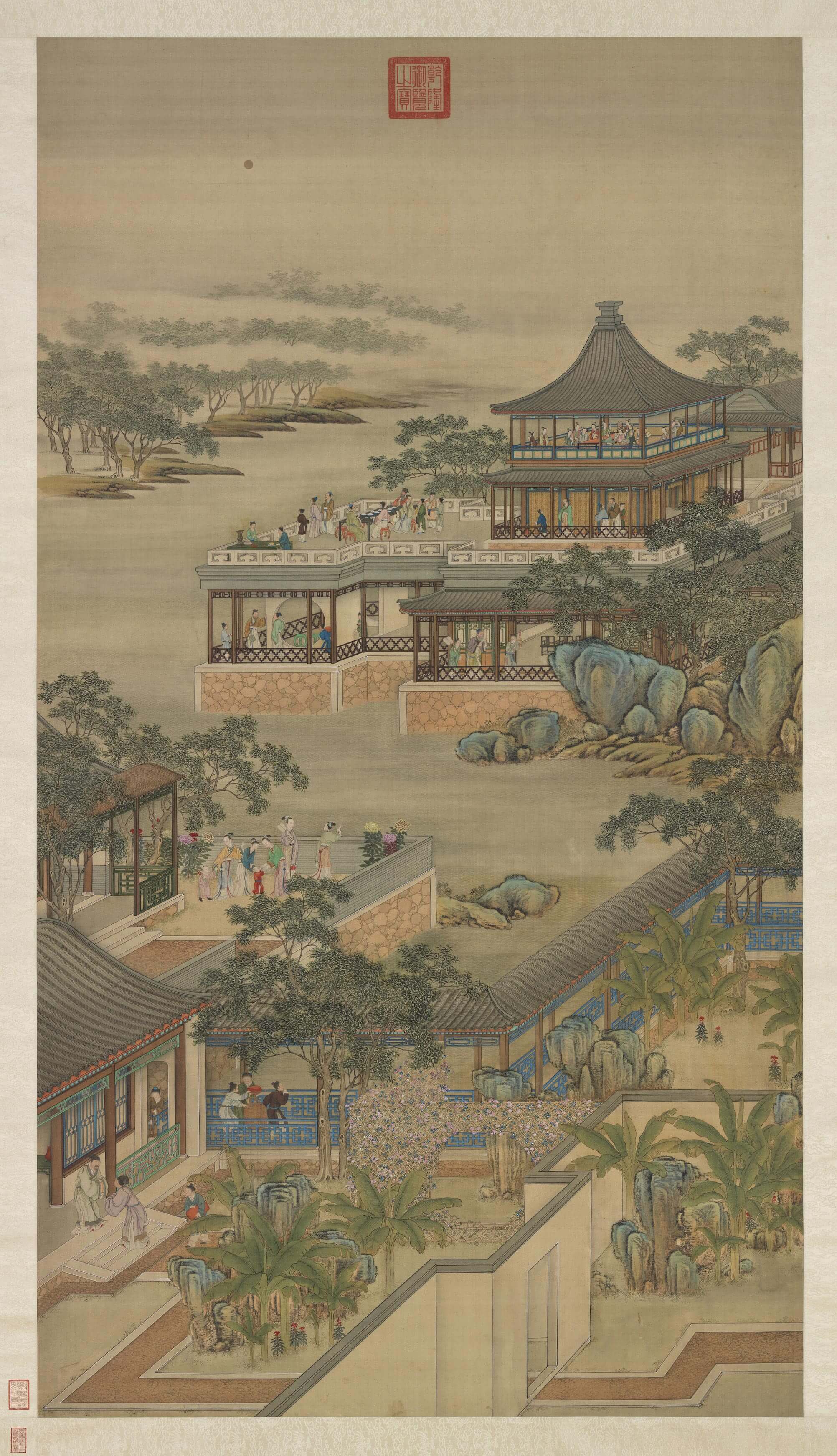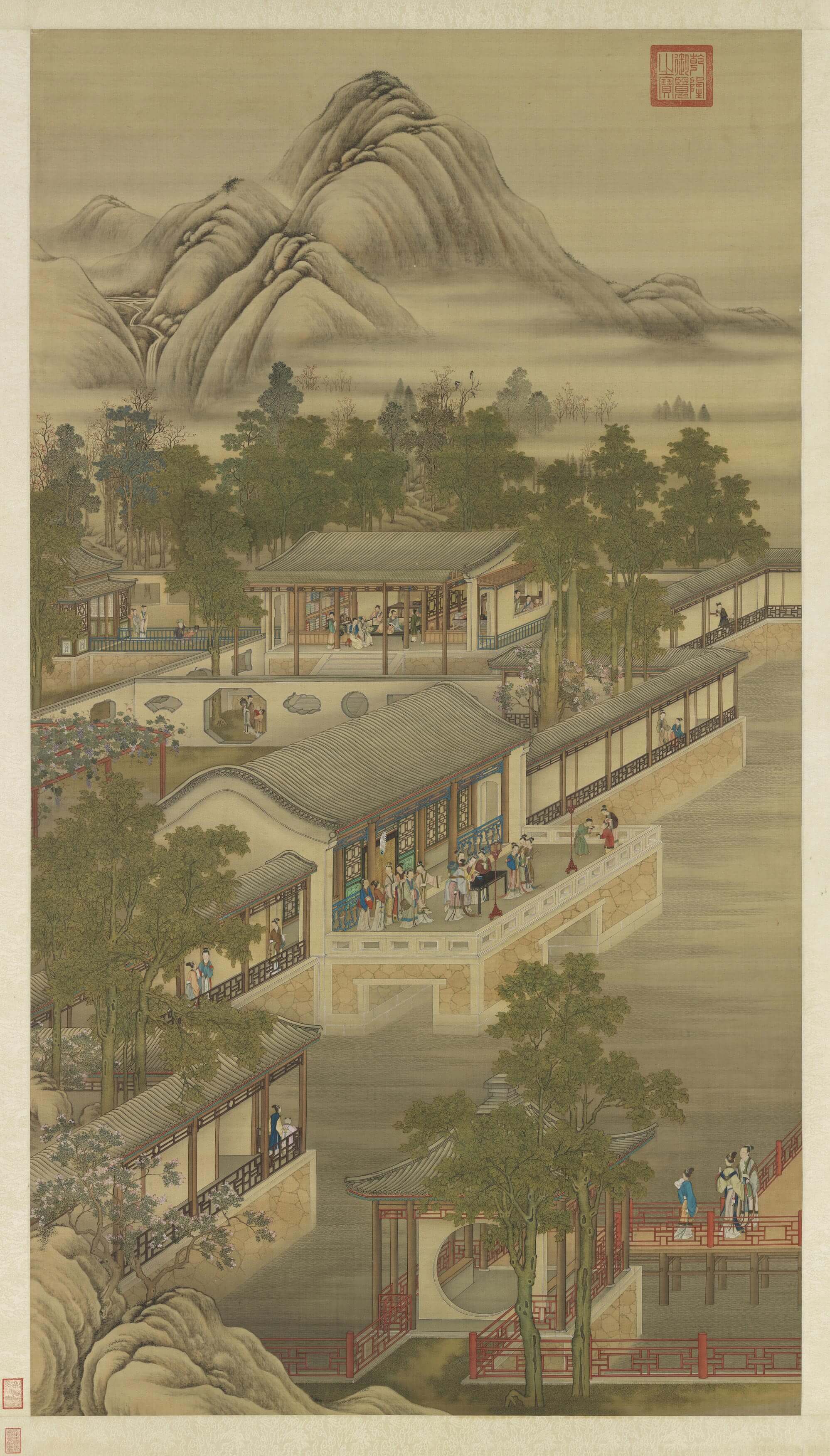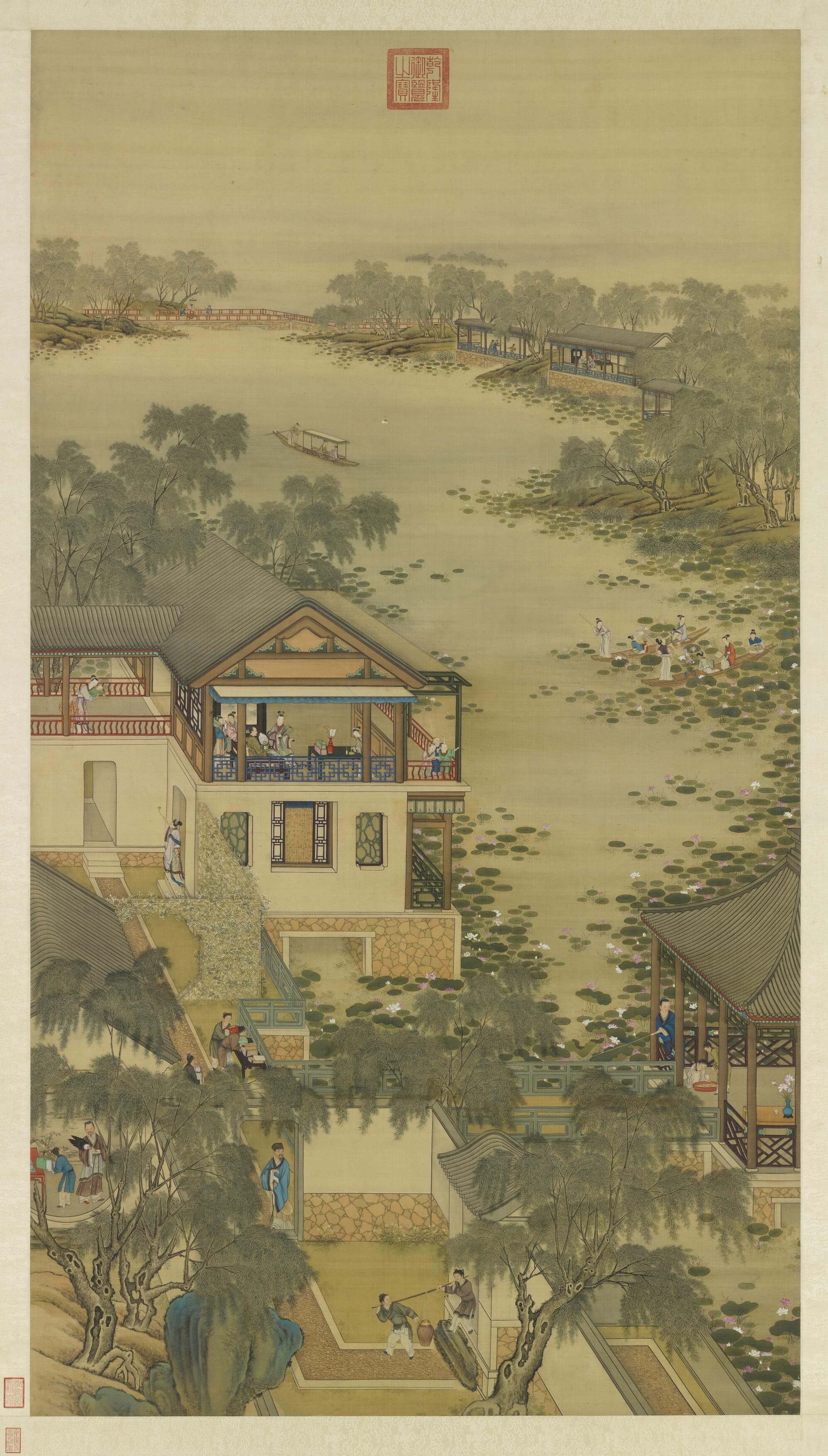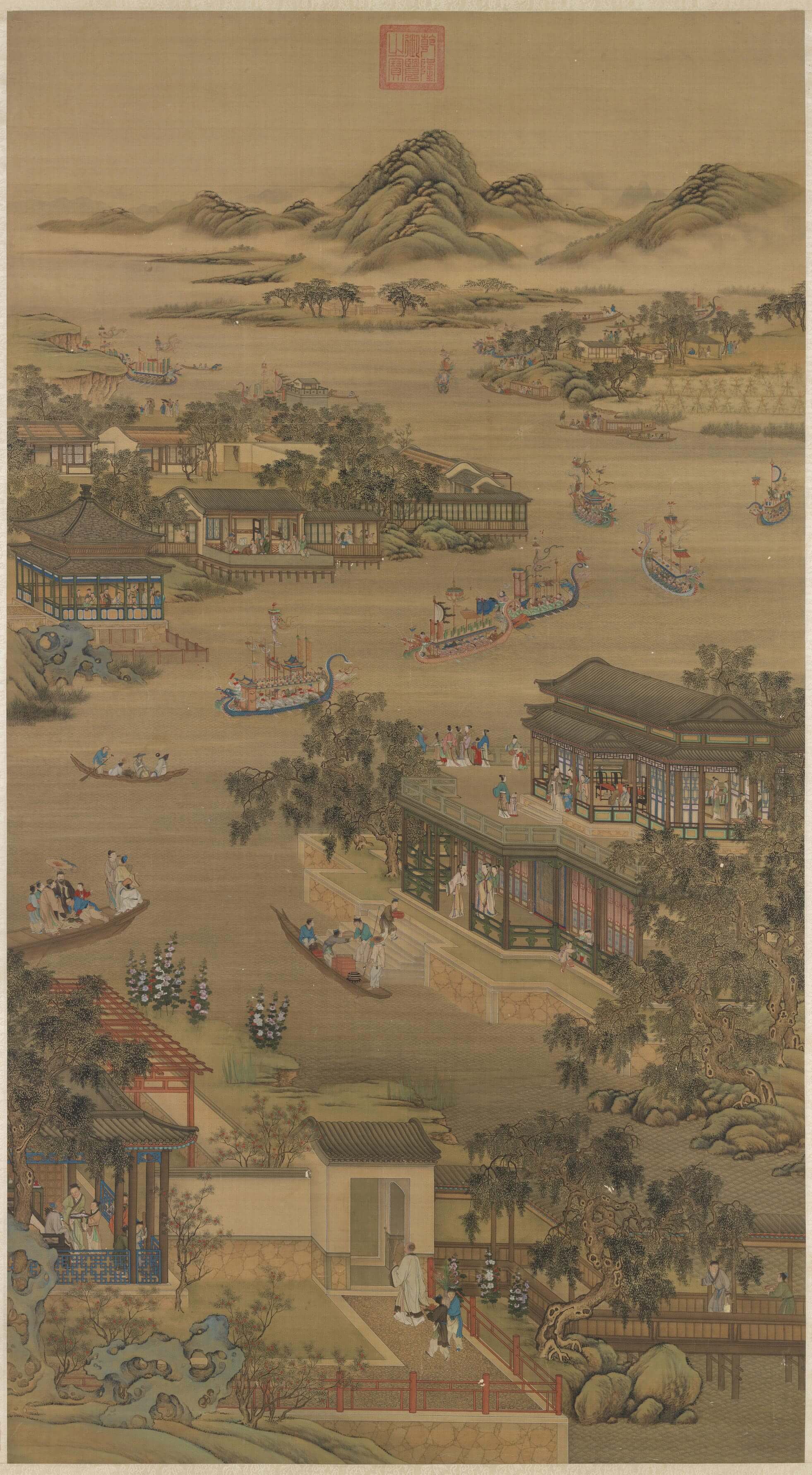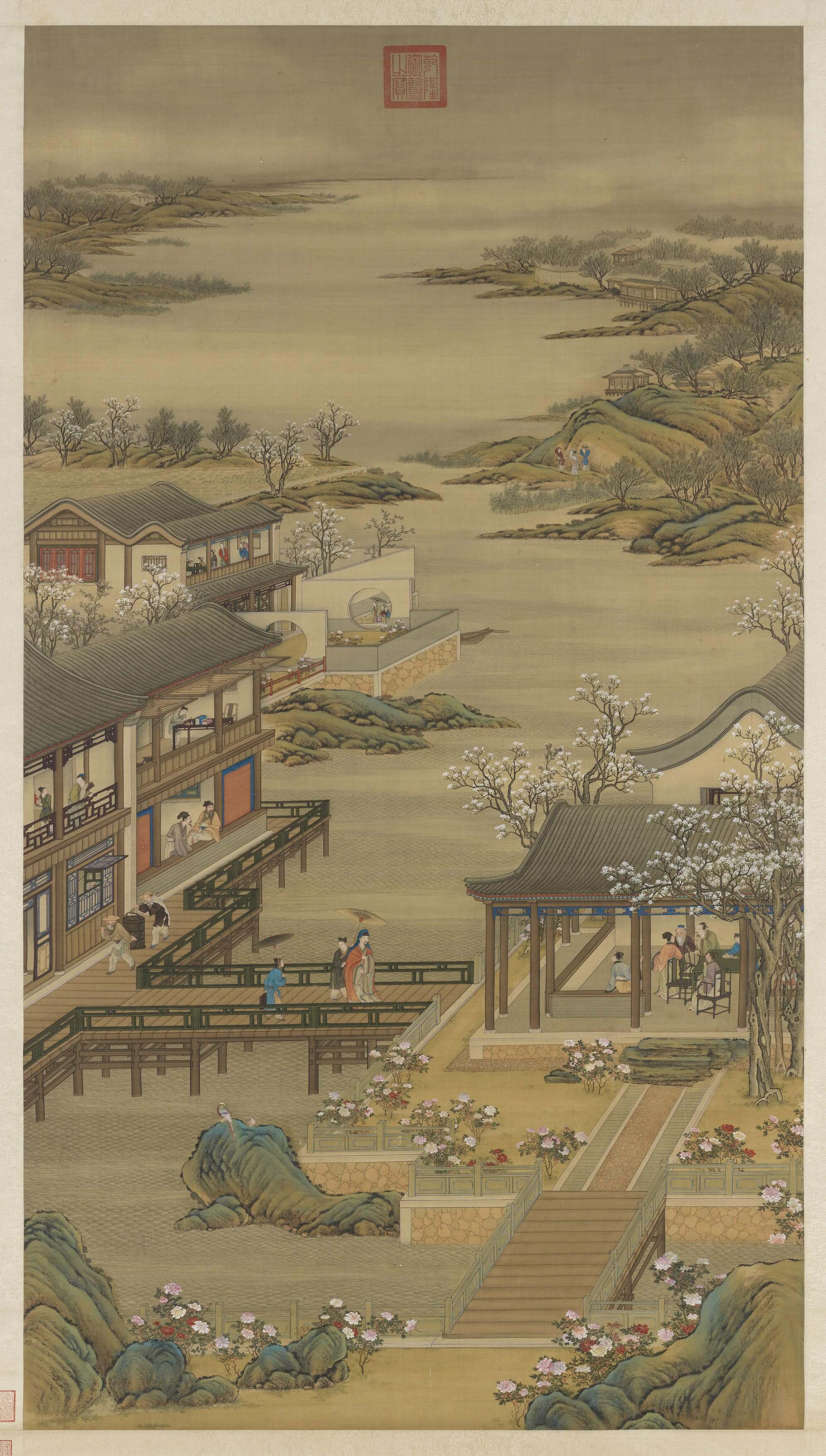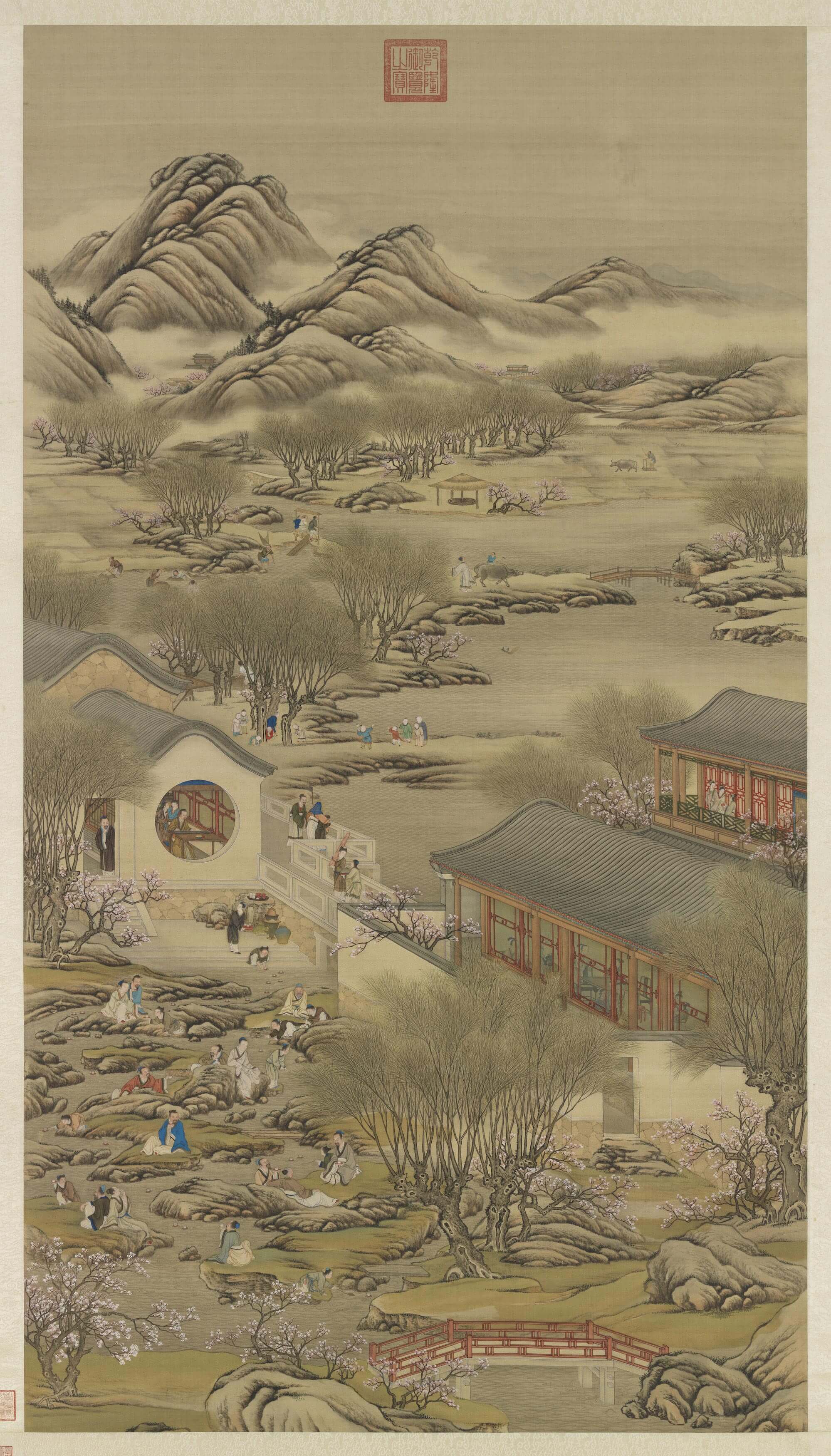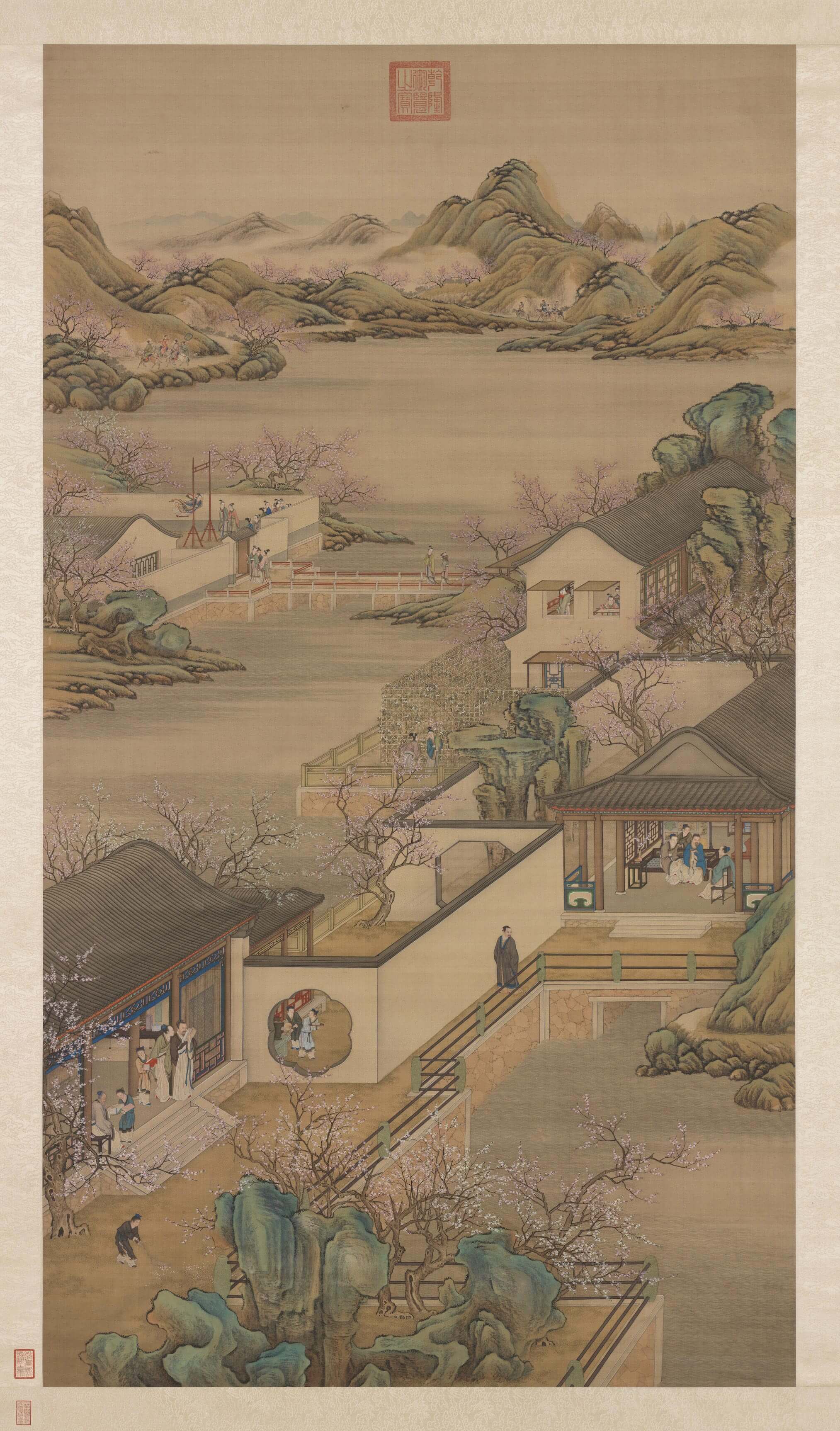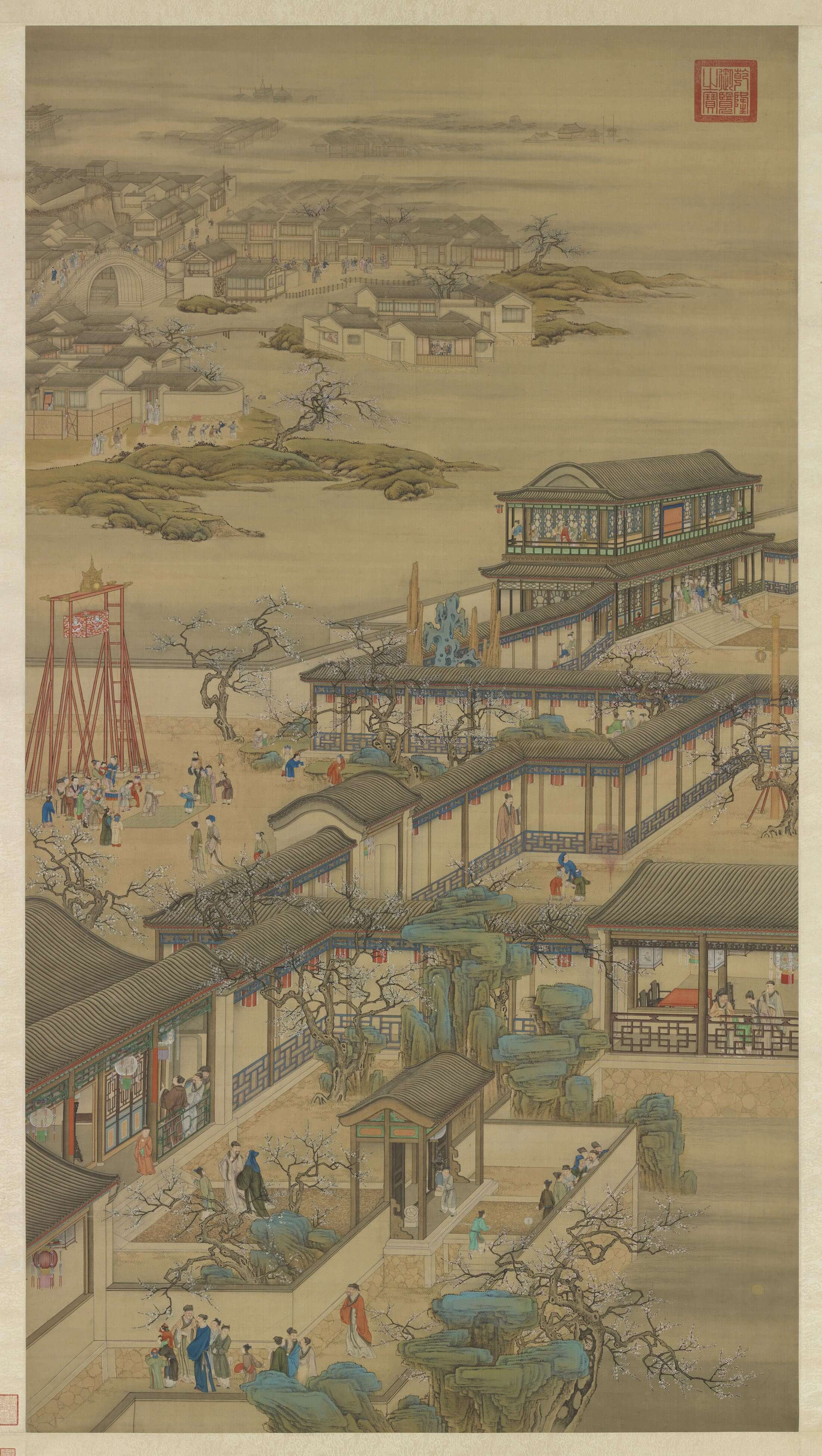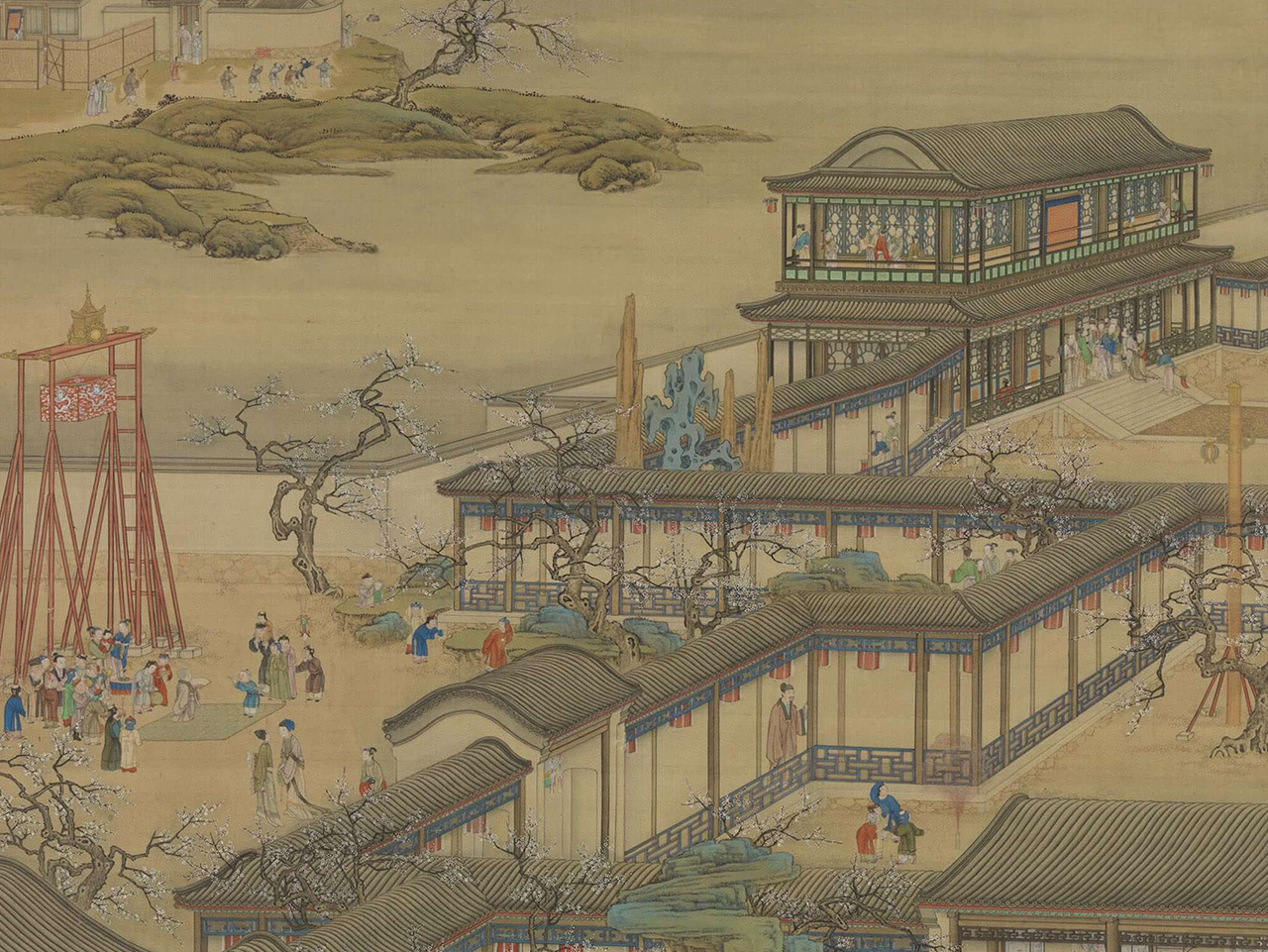Euphoria of Sight and Spirit
-
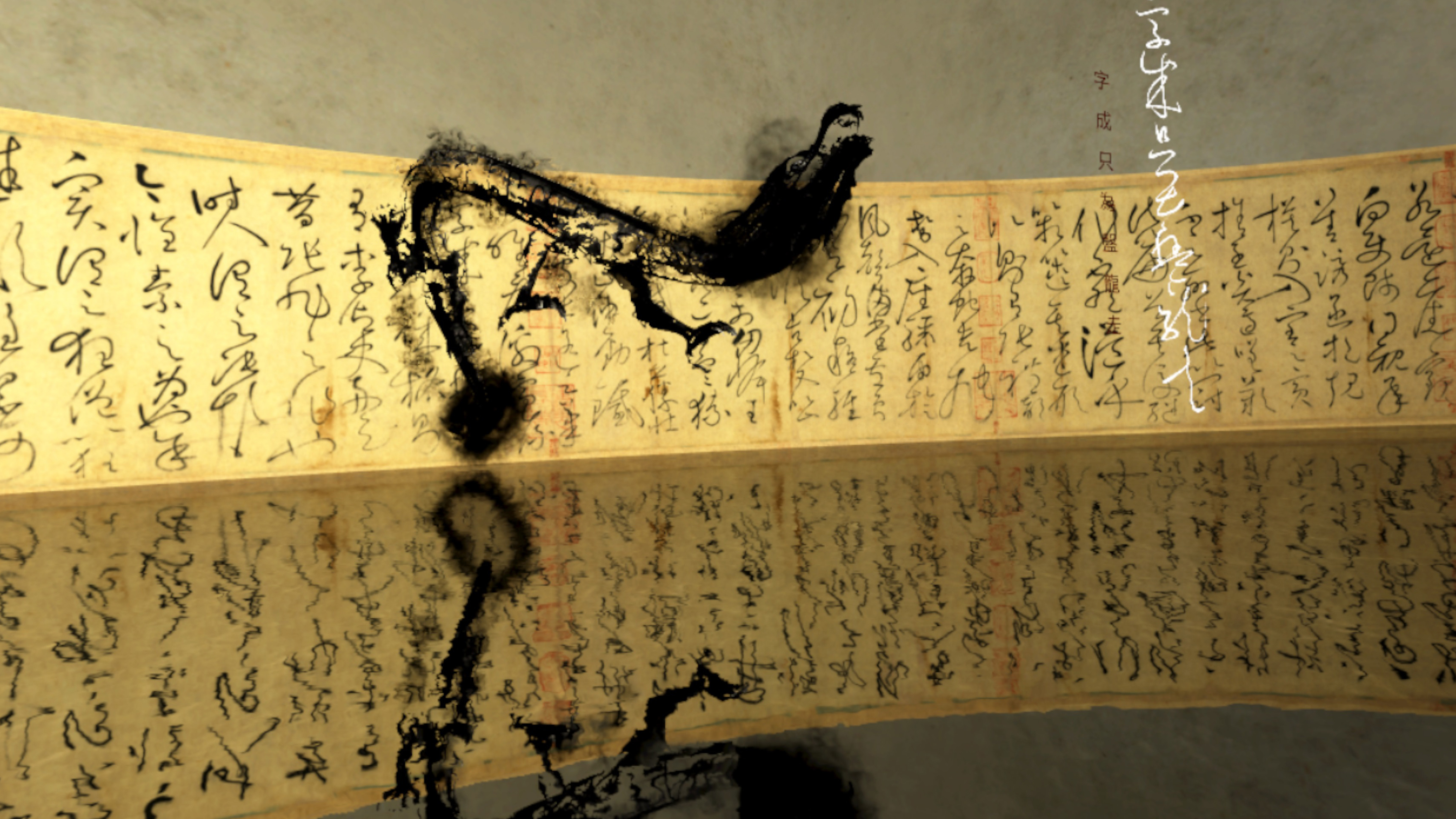
-
The Spirit of Autobiography50th Annual Worldfest Houston Gold Remi Award Winner
Inspired by Autobiography, the world-famous cursive script masterpiece produced by Tang dynasty monk Huai Su, “the Spirit of Autobiography” is the world’s very first calligraphy virtual reality installation. In the original, Huai Su excerpts poetic praise given to him by his contemporaries, who compares his calligraphy to images in nature. A famous segment, “my brush varies as the snake glides poised into his post, or thrashes in tune with the windstorm upon the walls,” captures the changing rhythm in Huai Su’s brushwork.
In the virtual reality installation, the calligraphic text transforms rapidly from dragons and snakes into a storm. A dancer dances slowly in the diaphanous mist between water and sky, using his dance forms to interpret the speed and strength behind the calligraphy. Finally, a virtual brush can be used to practice writing calligraphy.
-
Artifact Inspiration:
Autobiography
- Huai Su, Tang dynasty(618 - 907)
- Handscroll, 28.3 x 755cm
The monk Huai Su, originally going by the surname Chien and the style name Tsangchen, was a native of Changsha (or Lingling) in Hunan. Achieving renown in his hometown for cursive script, he later headed north to Changan, where famous people at the time presented poetry in admiration of his calligraphy. In the "Dingsi" year of the Dali reign (corresponding to 777), he transcribed these verses of praise along with a preface by the master calligrapher Yan Zhenqing to compose this handscroll. Some of the lines here refer to natural phenomena or use exaggerated phrases to describe the beauty of Huai Su's cursive script. Other passages praise him as an inheritor of the "wild and crazy" cursive script of Chang Hsu in his pursuit of unusual and unbridled qualities. The entire work was done with fine yet strong brushwork, the features continuous throughout for an unlimited range of unusual expressions, making this a masterpiece of cursive script.
-
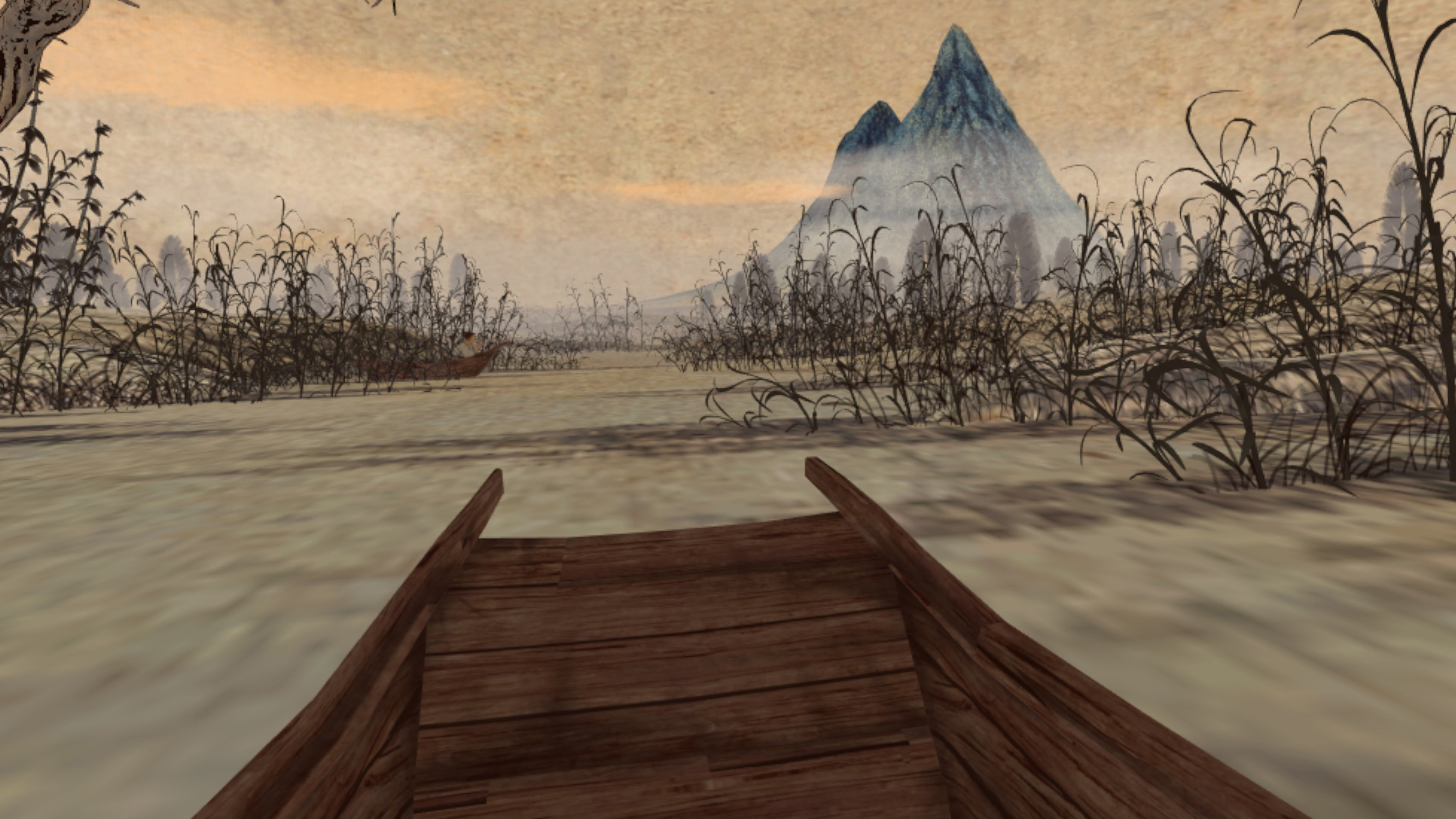
-
Roaming through Fantasy Land
“Roaming through Fantasy Land” is a virtual reality adaptation of the late Song and early Yuan dynasty painter Zhao Meng-fu's Autumn Colors on the Qiao and Hua Mountains. The immersive virtual reality experience whisks the audience from the real world into a virtual fantasy land, in which one roams through the autumn scenery of Jinan Province depicted by Zhao Meng-fu, proceeding along the contours of the sandbanks, the ancient Yellow River, pine trees, and the warm-toned shallow waters. This installation allows the audience to partake in the profound friendship that spurred Zhao Meng-fu to paint this masterpiece for his friend Zhou Mi.
-
Artifact Inspiration:
Autumn Colors on the Qiao and Hua Mountains
- Zhao Meng-fu, Yuan dynasty(1271-1368)
- Handscroll, 28.4 x 93.2cm
Zhao Meng-fu (style name Zi-ang, sobriquet Songxue Daoren), a member of the Song Dynasty imperial clan, went north after the Song fall to serve as an official in the Yuan capital of Dadu. This work, done in 1295 after heading back south from serving in the Jinan Circuit and for his friend Zhou Mi (1232-1298), depicts the scenery of Zhou's ancestral land. The composition of the scroll is succinct; by the shores of marshy slopes and expanses of water are the pointed Hua (Buzhu) Mountain to the right and the rounded Qiao Mountain on the left. Through Zhao Meng-fu's brush and ink as well as coloring, they have become even more animated, forming naturally beautiful scenery pleasing to the eye.
-
The Literary Art of Writing
The installation uses the latest image blending technology and several high-resolution projectors to seamlessly unfold the long-scroll painting on the wall, enabling viewers to experience and appreciate this unique form of art.
-
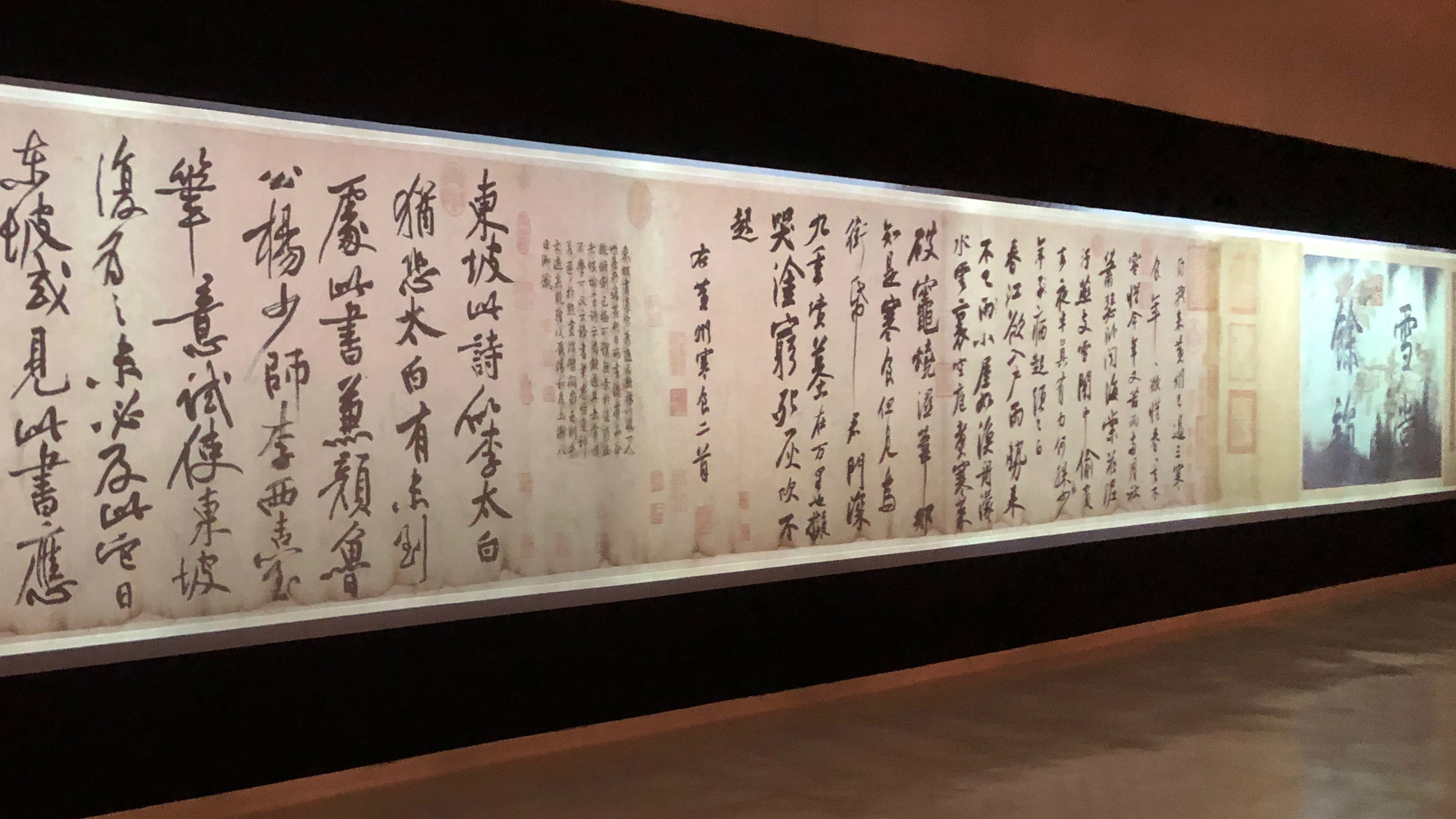
-
Calligraphy Animation: The Cold Food Observance
The Cold Food Observance manuscript was composed in 1079 while Su Shi was living in exile in Huangzhou (Huanggang, Hubei). On the Cold Food Festival in the fourth month of his third year there, he was inspired by the change in seasons to comment on the difficulties of life and the frustrations in his official career, composing "Two Poems on the Cold Food Observance in Rain," which he later transcribed in calligraphy to this handscroll. Later generations praise this manuscript as Su Shi's best surviving calligraphy. At the end of the manuscript is a colophon by Huang Ting-chien, adding another layer for appreciation.
This film utilizes the latest animation technology to capture the dramatic interplay between the fluctuating emotions in Su Shi's poems and the expressive ink traces left by his brush. Su Shi's characters lean here and there in a bold and unrestrained manner, exhibiting complexity in rhythm and form.
-
Artifact Inspiration:
The Cold Food Observance
- Su Shih (1036-1101), Song dynasty
- Handscroll, ink on paper, 34.2 x 199.5cm
Su Shih, a native of Szechwan, is probably best known by his sobriquet, Tung-po. A bold and direct personality, he was wrongly accused of seditious libel while in office and was banished from the capital. Although his career suffered vicissitudes at the hands of his political opponents, he has always been considered immortal in the art of poetry and prose. This piece was written during his exile to Huang-chou in 1082 then later transcribed into a work of calligraphy. Despite Su's upbeat character, the language has an air of dejection to it. The characters and the distances between them, for example, seem to vary rhythmically according to his emotions.
In terms of semi-cursive script, the size of the characters ranges considerably. Su Shih once said that his calligraphy is "everything from short to long, plump to bony." Here, the style is sometimes reserved, other times bold. Characters that particularly stand out include nien (line 2), chung (line 5), wei (line 11), chih (line 13), in which their last vertical stroke trails down for some distance to stand out against the blank paper. The variation in thickness, distance, and size gives this work an individual quality. In fact, Su Shih's calligraphy represents one of the more personal styles of the period. Furthermore, another great Song calligrapher, Huang Ting-chien (1045-1105), wrote a colophon for this work sometime before the ninth lunar month of 1100. The sizes of the characters in Huang's colophon are even larger than Su's, creating an ideal complement.
-
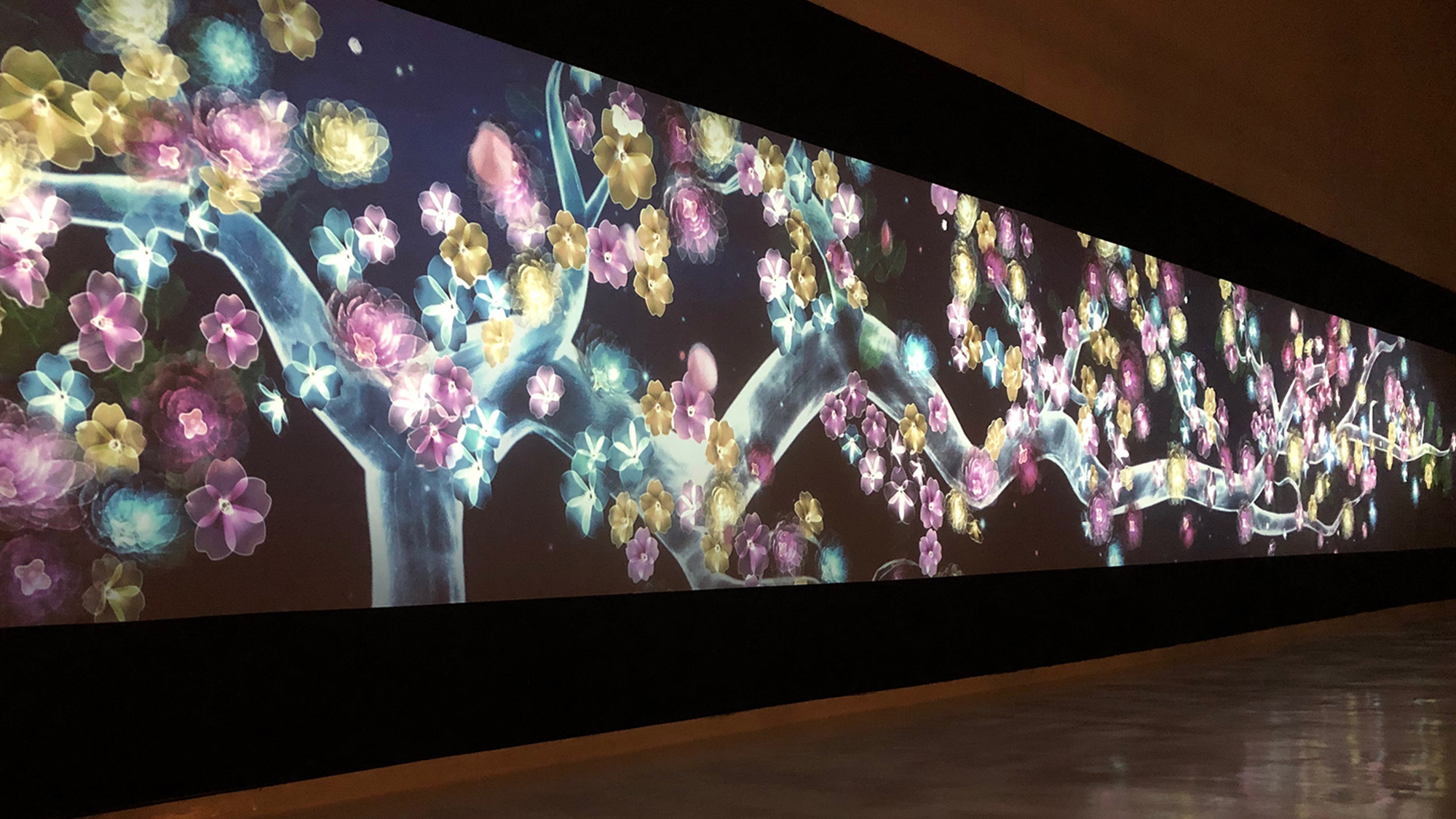
-
Calligraphy Animation: Besotted by Flower Vapors
Members of the literati during the Song dynasty favored refinement. They often wrote poems, sang, or presented flowers as demonstrations of affection to one another. Huang Ting-chien (1045-1105) composed Besotted by Flower Vapors to repay the gift of flowers given to him by a friend.
The film employs live film and multimedia to depict the work’s contextual meaning, leading audiences to understand the flower exchange custom practiced by the literati and guiding them into the calligraphist's spirit.
-
Artifact Inspiration:
Besotted by Flower Vapors
- Huang Ting-chien (1045-1105), Song dynasty
- Album leaf, ink on paper, 30.7 x 43.2cm
Huang Ting-chien, courtesy name Lu-chih, sobriquet Daoist of the Valley, is a renowned Northern Song poet and calligraphist. In 1087, Huang mailed two poems to his friend, Wang Gong, who was residing in Yangzhou. The first poem reads: "Wang Shen keeps sending me poems for a response. I do not feel like composing. That rascal now pressures me with flowers. So I jest."
The following poem is the original text of "Besotted by Flower Vapors," in which Huang alludes to his unpleasant predicament of being impounded by Wang's flowers. Around 1100, Huang Ting-chien retranscribed the second poem onto this scroll, which is in the National Palace Museum's collection.
This scroll was written freehand in firm brushwork. The ink varies from moist to dry, dark to light. Though predominantly in cursive script, it still contains semi-cursive script styles. Each character is discrete, the beginning and ending for each stroke softened and contained. Though a mere 5-line poem, the spacing of brushwork is beautifully cadenced. The color of the ink transitions from dark to light, with just enough variation to make it a superlative piece.
Translation: The fragrance of flowers is so intoxicating that it threatens to disrupt my Zen meditation. My heart and spirit are actually well past middle age. Spring comes, and I should have been inspired to compose poems. But why does my motivation run like a boat struggling upstream against the rapid water in Bā Jié Tān?
-
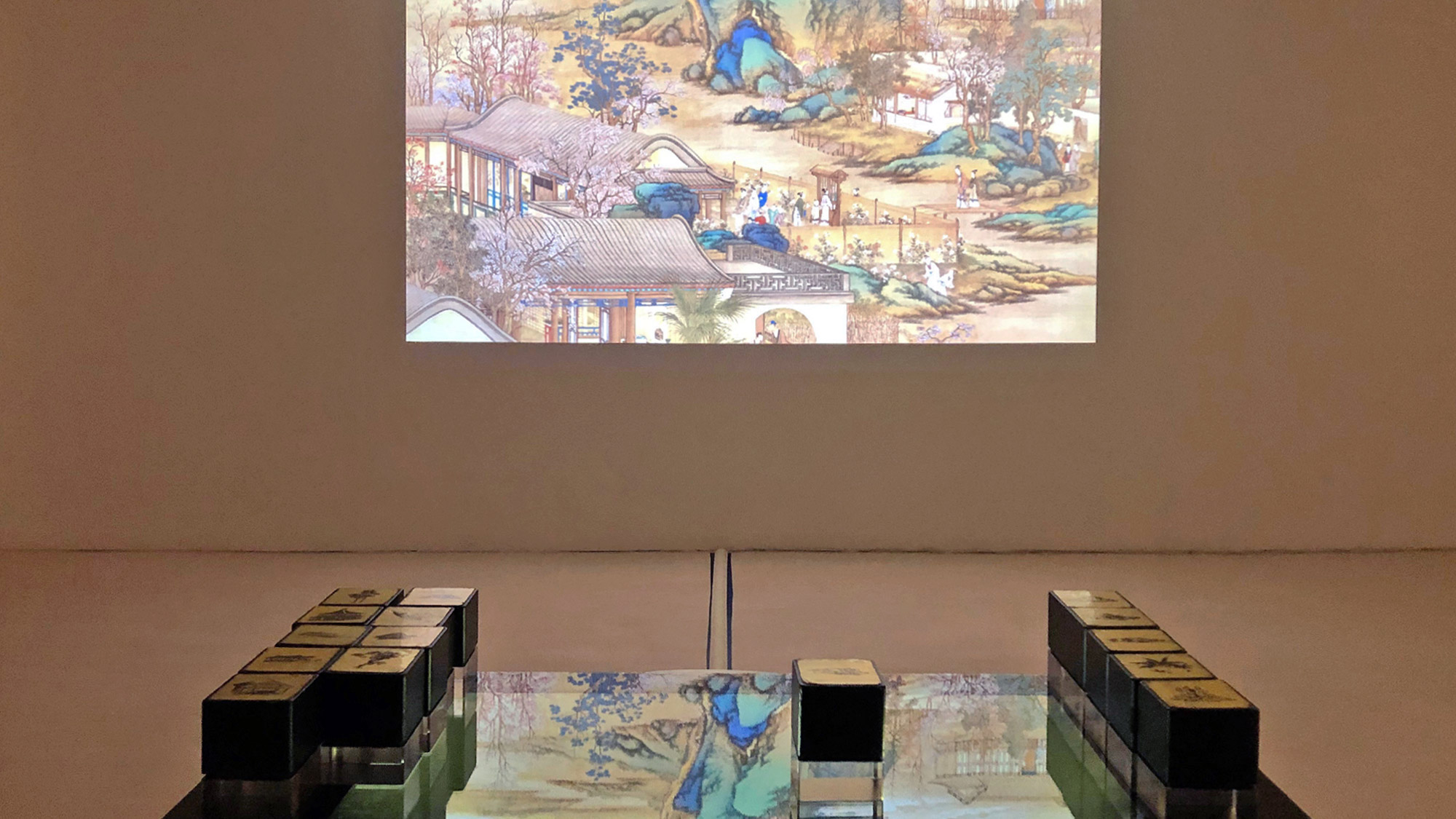
-
Stamps of Landscape
Elements of the mountains, waters, stones, clouds, flowers, trees, houses and humans from Activities of the Twelve Months can be arranged by visitors on the screen via the digital interactive augmented reality program. Audience members can decide where they want to stamp on the screen and the locations of the other elements will arrange themselves accordingly to the position of the impression. At the end of the game, players can also experience Emperor Qianlong’s love of art and his hobby of signing prized possessions with his seal.
-
Artifact Inspiration:
Activities of the Twelve Lunar Months
- Qing dynasty
- Hanging scroll, 318x127.4 cm
This work is made up of twelve genre paintings spanning the period of a year, each one showcasing a different month with a wide range of natural phenomena and folk customs associated with it. Although the works are anonymous and undated, scholars have determined that they are most likely from the early years of the Qianlong Emperor's reign in the eighteenth century and probably completed by several palace painters. The scenes depicted are extremely rich and the objects rendered in great detail. Each painting adoptsWestern-style perspective, which helps to create scenarios that appear more lifelike. In the bottom left or right corner of the paintings are courtyard buildings extending into the distance with small groups of people engaged in various activities.
These twelve paintings once hung in the Qianlong Emperor's palace, one displayed with the passage of each month. Enjoying the exquisite natural scenes showcased in these works, it can sometimes seem as if the viewer is transported there to take part in the various activities that the people are depicted as enjoying.
